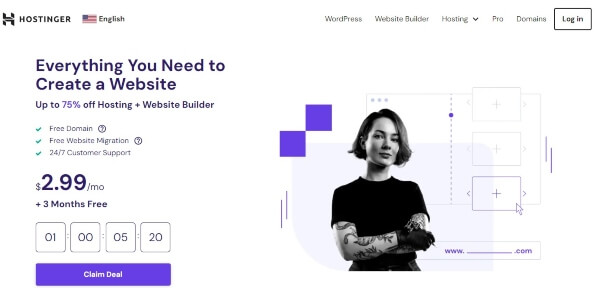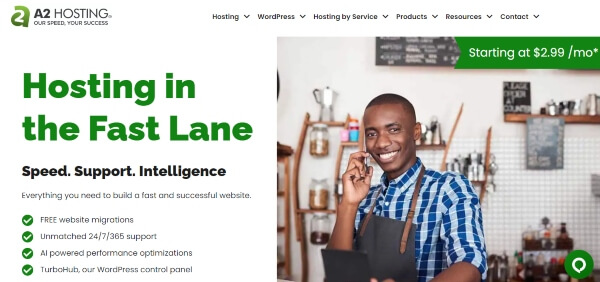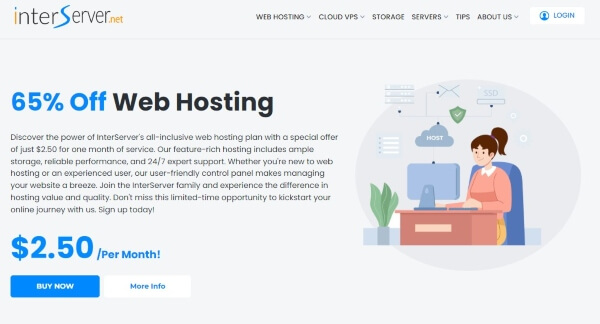
How to Start a Travel Blog And Make Money 2025 : Beginners Guide
This guide is your first step into the world of travel blogging, where sharing your journeys can also mean earning from them.
You’ll learn how to set up a blog that captures attention and how to monetize your passion for travel.
Get ready to transform your love for exploring into a rewarding adventure.
Stay tuned for insider tips on making your travel blog a hit!
Short Answer: Here’s how to get into travel blogging in 10 steps.
- Pick a specific (yet profitable) niche
- Name your travel blog
- Start a WordPress travel blog on Bluehost
- Dress up your travel blog
- Power up your WordPress blog with plugins
- Create essential pages
- Planning your first travel blogging trip
- Research for blogging ideas
- Set a schedule that blends both blogging content and travel
- Promote your travel blog
Ready to Learn How to Start a Travel Blog on Pinterest? Skip the Intro & Jump to Step 1 Here
Key Takeaways
- Pick a specific niche for your travel blog to stand out and attract a specific audience. For example, focus on luxury trips or budget adventures.
- Use Bluehost and WordPress to set up your travel blog easily. Bluehost is user – friendly and offers affordable plans starting at $2.95 per month.
- Monetize your travel blog through various methods like ads, affiliate marketing, selling digital products, sponsored posts, and paid press trips.
- Draw readers by mastering SEO techniques, pinning on Pinterest and posting regularly on social media platforms like Instagram Stories or TikTok.
- Build connections with other bloggers and attend blogging conferences to find opportunities such as guest posting or becoming a virtual assistant.
Understanding Travel Blogging
Save/Pin the image below👇because I often update my posts. So stay informed with this blog “How to Start a Travel Blog And Get Paid” and save it.

Travel blogging is sharing our adventures with the world. We write about where we go, what we see, and the people we meet.
It’s not just a diary. It’s a resource.
People use your tips to plan their trips.
They trust you to tell them about hidden gems and travel hacks.
You also need to know some tech stuff-like SEO and social media—to get readers.
But don’t worry! Start simple, learn as you go, and have fun with it.
Share stories, snap photos, make videos—whatever feels right for you.
Remember, your unique perspective is why readers will come back for more!
How to Start as a Travel Blogger in 10 Steps

Starting from selecting that perfect niche to draw in your audience, all the way to mapping out your inaugural adventure.
We’ve lined up every step with actionable advice so you can swiftly navigate setting up and optimizing your blog for success.
It’s about laying down a solid foundation that blends passion with profitability.
With that said, let’s look at how to get started travel blogging.
1. Choosing a Niche
We understand picking a niche for your travel blog is crucial.
It helps you shine among others and draw readers who love what you’re into.
Think about what excites you in travel.
Is it luxury getaways, budget backpacking, or food adventures?
Choose what sparks your passion because that will fuel your blog with unique content.
(But be sure that it has money making opportunities.)
Focusing on a specific area makes brands notice you too.
They’re always on the lookout for bloggers who talk to their audience directly.
If you’re all about eco-friendly travel, hotels that share those values will want to work with you!
And instead of saying you’re a “Budget Travel Blogger,” talk about cheap travel in places like Kyoto, Japan.
You just need to make yours really specific.
Plus, becoming an expert in one type of travel opens doors to paid trips and special projects.
So take time, assess the market, see where your heart lies and carve out your own space in the big world of travel blogging.
| Step | What to Do | Quick Tip |
|---|---|---|
| 1. Examine Your Interests and Strengths | Think about what you love doing and what you’re good at. | Mix your hobbies and skills to find cool business ideas. |
| 2. Evaluate Your Options | Pick the best career option from your interests. | Choose what you love and can do for a long time. |
| 3. Analyze the Market and Competition | Look into the demand for your niche and check out the competition. | Find a gap in the market that matches your skills. |
| 4. Identify a Profitable Niche | Make sure there’s enough demand for your idea. | Look for online or in-person markets with issues you can solve. |
| 5. Test Your Ideas | Try out your products or services to see if people like them. | Use feedback to tweak your offerings and marketing strategy. |
Table 1 : Choosing a specific travel niche.
2. Naming Your Travel Blog
Once you’ve pinpointed your niche, it’s time to give your travel blog a catchy name.
This is your brand, the first thing people will see.
Keep it unique and memorable. Your blog’s name should spark curiosity and hint at what adventures await readers who click through.
Think of words that describe your travel style or destinations you love. Mix and match them until something clicks.
Your blog’s name sticks with you as you grow, so choose wisely. Make sure it rolls off the tongue easily and stands out from the crowd.
Check if the domain is available to match your chosen name; this keeps things consistent for followers finding you online.
A good name can make all the difference – it’s more than just a title, it’s an invitation to join in on your journey!
3. Pick a Bluehost and install WordPress
Starting a travel blog is exciting, and choosing the right hosting service is key. We recommend Bluehost because it’s affordable and beginner-friendly.
- Visit Bluehost’s website through the sign – up link.
- Select the basic plan; it’s just $2.95 per month.
- Find a unique domain name for your travel blog at no extra cost.
- Fill in your account information and payment details on their secure form.
- Choose any additional features you might find useful, although they’re not mandatory.
- Set a strong password for your Bluehost account to keep it secure.
- Log into Bluehost and find the WordPress icon.
- Click on ‘Install WordPress’; Bluehost makes this process simple.
- Follow the prompts to complete the installation of WordPress.org on your site.
For a complete walkthrough, see my guide on how to start a WordPress blog on Bluehost.
4. Designing Your Travel Blog
Creating a beautiful travel blog is like setting up your online home. You want it to feel welcoming and show off your unique style.
Choose a WordPress theme that matches the vibe you’re going for.
(If you want a customizable premium theme, I recommend Divi Elegant Themes. It’s super easy to use and affordable. Plus, their support is top notch.)
Simple, clean designs often work best—they let your photos and stories take center stage. Make sure it’s mobile-friendly too; lots of people will read your blog on their phones.
Next, customize your theme with colors, fonts, and layouts that speak to you.
Think about adding features like social media buttons or a section for recent posts to keep visitors engaged.
Your design should capture the essence of your adventures and make readers excited to join you on the journey!
5. Install WordPress plugins
After shaping your travel blog’s design, it’s time to enhance its functionality with WordPress plugins.
Plugins add special features that help your blog work better and offer more to your readers. Here’s how we do it:
| Plugin | Purpose |
|---|---|
| AISEO | Helps your blog show up in search engines so more people can find it. |
| WP Rocket | Makes your blog load faster, which Google likes. |
| UpdraftPlus | Backs up your blog so you can fix things if they go wrong. |
| Elementor | Lets you design your blog and make it look nice with templates. |
| Antispam Bee | Stops spam comments on your blog automatically. |
| Insert Headers and Footers | Lets you add special codes to your blog, like tracking how many people visit. |
| Email Address Encoder | Keeps your email safe on your blog from spammers. |
| WPForms | For readers to reach out to you directly. |
| Smush | Makes your blog’s pictures smaller without losing quality so your blog loads faster. |
Table 2. Summary of the key plugins for a travel blog.
6. Add your pages
We need to create pages for our travel blog to make it easy to navigate. Pages are the backbone of your site’s structure and guide visitors through your content.
- Start with a Homepage: This is where readers land first. Make it welcoming with high-quality images and an intro about your blog.
- Set up an About Page: Share your story here. Tell readers who you are, why you travel, and what they can gain from your blog.
- Create a Contact Page: Let readers reach out to you easily. Include an email form, your social media links, and other contact details.
- Develop a Blog Page: This is where all your articles will live. Keep it organized by categories or destinations.
- Add a Destinations Page: List the places you’ve been with photos and links to relevant posts.
- Consider a Resources or Gear Page: Recommend products, services, and travel gear that you use. Use affiliate links here to earn income.
- Include a Work With Me Page: If you want partnerships, show brands how they can collaborate with you on this page.
- Think about FAQs: A Frequently Asked Questions page can be helpful for readers looking for quick answers.
- Include a Privacy Policy: This is a must have for GDPR compliance and other legal stuff to protect your ass. So do yourself a favor, and check out Amira’s legal template.
7. Planning Your First Travel Blogging Trip
After setting up the pages on your travel blog, it’s time to focus on creating amazing content. Here’s how you can plan your first travel blogging trip:
- Decide where you want to go and what unique angle you can provide about the place.
- Research your destination thoroughly, looking for hidden gems and experiences not widely covered.
- Set a budget that permits great adventures without breaking the bank. Consider accommodations, transportation, food, and activities.
- Plan a content schedule to know what you’ll post and when. This keeps your readers engaged.
- Pack smart with essential gear like a good camera, lenses, and maybe a laptop for writing posts.
- Build connections with other travelers and locals through social media before you go to get insider tips.
- Start small with a trip close to home to practice balancing travel with writing.
- Keep notes or a journal during your travels to capture fresh details and stories.
- Take plenty of photos and videos; visuals are key in travel blogging!
- After the trip, write honest posts that share both the good and bad of your experiences.
8. Research to Find Topic Ideas
Researching topic ideas is like hunting for hidden treasure.
You must dig through travel forums, check out trending hashtags on Instagram, and see what’s buzzing in the travel blogging community.
Think about your experiences too – a unique trip or a travel hack could spark great interest.
Use tools like Google Trends and Pinterest Trends to find what destinations or travel tips people are searching for.
Also keep an eye on Pinterest and YouTube channels to catch the latest travel waves.
It’s about mixing curiosity with strategic thinking.
Get inspired by other bloggers but add your twist to stand out.
Plus.
Keyword research is super important because it shows you exactly what words people type when they’re looking for travel tips or places.
Finding long tail keywords, which are like longer, more specific phrases, is a game changer.
They’re less competitive but super targeted, meaning you can attract readers who are exactly looking for what you’ve got.
A keyword tool that is worth checking out is SE Ranking.
The pricing is more affordable than well know tools like Ahref and Semrush.
Next up: balancing content creation while enjoying adventures!
Don’t Miss This:
9. Balancing Content Creation and Traveling
Creating content while traveling can be tricky.
You want to soak up the adventure, yet you also need to work on your blog posts and videos. Our tip? Set a schedule that blends both.
Decide on specific hours for exploring and designate time blocks for writing or editing.
This way, you’re always ahead of your content without missing out on the travel experience.
Keep your camera ready and jot down ideas as they come. These spontaneous moments often make the best stories!
Use tools like smartphones or apps that let you write down notes or edit photos on-the-go.
It’s about finding harmony between capturing memories and sharing them with your audience in real time.
And don’t forget, quality beats quantity every time.
Focus more on creating impactful content rather than just filling up space.
While I’m on the topic of posting content, below are some travel blogging post topics:
| Post Idea | Description | Ideal For |
|---|---|---|
| Things To Do In | Lists of activities and attractions in specific places. | Tour affiliates like GetYourGuide and Viator. |
| Where To Stay In | Recommendations on accommodations in different locations. | Hotel and apartment affiliates. |
| How To Get From A to B | Guides on transportation options between destinations. | Airline and bus affiliates. |
| Best Travel Products | Lists of top travel gear and accessories. | Amazon and other product affiliates. Good for high search volume and conversions. |
| Travel Product Review | Detailed reviews of travel products you’ve used and recommend. | Amazon affiliate links. |
Table 3: Blog content ideas for launching a successful travel blog.
10. Attracting Readers to Your Travel Blog
We understand that drawing readers to your travel blog is key.
You want folks excited about your adventures and tips.
To do this, get smart with SEO (search engine optimization).
Use keywords people search for, like “Tulum travel secrets” or “travel to Hong Kong.”
This helps your posts show up in Google search results.
And there’s the power of Pinterest marketing.
So, pin eye catching images to attract your ideals readers to your travel blog.
(Read my ultimate guide on how to use Pinterest for blogging.)
And don’t overlook the power of social media marketing!
Share vivid photos and engaging stories on platforms like Instagram Stories or TikTok.
Let’s focus on delivering awesome content consistently too. People come back for fresh, quality updates that help them in their travels.
Throw in some personal experiences with affiliate products from hotels.com or Discover Cars, and you can offer value while earning commissions.
Keep content genuine. It goes a long way in making readers stick around and click through those affiliate links!
Below is a table summary of ways to promote your travel blog.
| Promotion Method | Description |
|---|---|
| Social Media | Share your blog posts on platforms like Facebook, Twitter, and Instagram to reach your followers and engage with your community. |
| Use Pinterest to pin images from your blog posts. Create attractive, click-worthy pins that link back to your blog. Great for visual content. | |
| SEO | Optimize your blog content with relevant keywords to rank higher in search engine results, making it easier for people to find you. |
| Email Marketing | Build an email list and send regular newsletters with updates, tips, and links to your latest blog posts to keep your audience engaged. |
| Guest Posting | Write articles for other blogs in your niche to get in front of a new audience and drive traffic back to your blog. |
| Networking | Join blogging communities and forums to connect with other bloggers, share tips, and promote each other's content. |
| Repurpose as YouTube Videos | Turn your blog posts into engaging YouTube videos to reach a wider audience and add a multimedia element to your content. |
| Update Your Old Content | Refresh your older blog posts with new information, images, and SEO optimization to increase their visibility and relevance. |
| Use HARO (Help A Reporter Out) | Respond to queries from journalists and media outlets on HARO to get your blog mentioned in news articles and media, driving traffic and credibility. |
Table 4: How to get traffic to your travel blog.
By the way👋, if you need help with help to start a travel blog, you can reach out to me here.
How Do You Make Money Travel Blogging?

There are many ways a travel blogger can get paid.
Below are 10 ways to monetize a travel blog.
1. Hosting Ads on Your Site
Hosting ads on your site is like inviting guests who pay rent just for showing up. With Google AdSense, you can start earning money as soon as people visit your travel blog.
You place the ads and get paid when visitors click or see them.
It’s a way to make cash while you’re out exploring the world.
Choosing the right ad network matters too.
MediaVine and AdThrive are big names that tailor services for bloggers, but they require high traffic numbers before you join.
If you’re just starting out, networks like SHE Media, Monumetric, and Ezoic welcome beginners with open arms and help grow that passive income stream from day one.
Keep in mind every ad network has different rules; some focus more on display advertising while others might offer higher payouts per view or click.
2. Joining Affiliate Marketing Programs
You can make money with your travel blog by getting into affiliate marketing.
This means you team up with companies and suggest their products to our readers.
When someone clicks on one of your special links and buys something, you earn a commission.
It’s like telling a friend about a great pair of hiking boots and then getting paid when they buy them!
For travel bloggers, there are loads of affiliate programs out there.
You could share links for hotel bookings, tours, insurance plans for travelers, or even camera equipment that helps us capture those stunning landscapes.
Some affiliate programs to consider include:
- Amazon
- Impact
- Clickbank
- Booking.com
- GetYourGuide
- FareHarbor
- Klook
- RentalCars.com
- SkyScanner
Just be sure to pick stuff that matches what your travel blog is all about, so it feels genuine to our audience.
Although, affiliate marketing does present money making opportunities for travel blogging, it does require effort.
I cover this aspect in my blog – Is Affiliate Marketing Hard.
3. Selling Digital Products
This is a fantastic way to earn income through your travel blog.
You can create ebooks packed with your best travel tips, courses that guide others on how to start their own blogs, or videos showcasing breathtaking destinations.
With tools like Canva for design, Gumroad for sales, and Thrivecart for managing online transactions, getting your digital store up and running is simpler than you might think.
Think about the amazing photos you take during trips; they could be making money for you!
Sell them as prints or license them out. The key is to make products that reflect what you love about travel—and what will help your readers in their journeys too.
Digital products have no inventory issues and provide passive income once set up.
They keep earning even while you’re off exploring new places!
4. Landing Paid Press Trips
This can be a game-changer for us travel bloggers.
Imagine going on dream vacations where companies foot the bill for flights, hotels, and tours!
In return, we create awesome content like blog posts or videos that highlight their services.
Here’s how you make it happen:
You start by creating amazing content that really shows off our unique style.
This makes brands take notice of our work. Next, we go to travel blogging conferences and women in travel summits to meet with potential sponsors face-to-face.
It’s all about making connections!
When pitching, having a Media Kit handy is key.
It showcases the value we bring with traffic numbers and our target audience demographics.
Always aim to deliver more than promised.
This builds lasting relationships that could lead to even more exciting opportunities down the road!
5. Sponsored Posts
Writing sponsored posts can be a solid way to earn money with your travel blog.
To get these opportunities, you must work hard and stay committed. It’s crucial to show companies what you can do.
Create an impressive portfolio of your best writing. This will help attract brands willing to pay for exposure on your site.
As you build relationships and grow your audience, more doors open for sponsored content deals.
Make sure each post adds value for both the reader and the brand sponsoring it.
Keep improving your skills in creating quality SEO content to maintain high standards in every collaboration.
Sidenote:
The main problem with paid content is it might change the feel of your blog.
If you’re a well-known blogger, your readers get your style and how you usually write.
So, when you post paid content, it can seem too much like an ad to your fans.
And because these sponsored posts can make you more money, there’s a temptation to do too many.
If you do that, your blog will just seem like a big ad. Your readers will see that you’re not really trying to help them like before.
So, when it comes to sponsored posts. Less is better.
6. Sponsored Links
Just like crafting stories for brands, selling sponsored links can be a smart move.
Brands pay you to include links in your blog posts that point to their websites. Why do they want this?
These backlinks help improve their search engine rankings, especially if your travel blog gets good traffic and has a high domain authority.
You place these links carefully into our content so it feels natural and helpful for our readers.
Always remember to follow Google’s guidelines – use “no-follow” tags on sponsored links.
This tells search engines not to pass along SEO benefits from your site to the advertiser’s site.
It’s a way to play safe with search engines while still earning from your blog!
7. Networking with Other Travel Bloggers
Meeting other travel bloggers can open doors we never knew existed.
Engaging in groups like “Affiliate Marketing for Travel Bloggers” and “SEO for Travel Bloggers” on Facebook lets us exchange tips, find support, and sometimes even collaborate on projects.
Attending conferences such as TBEX or TravelCon also puts you in touch with folks who understand the grind and glory of travel blogging.
You learn from each other’s successes and challenges, shaping our own blogs to be more effective.
Working together might lead to guest posting opportunities, which boosts both our visibility and domain authority (DA).
Also, being a VA for seasoned bloggers could help us sharpen skills that we can later offer as services.
Each connection we make is a step toward growing our brand and income streams.
8. Monetizing Your YouTube Channel or TikTok
Networking isn’t just about collaborating.
It also paves the way for you to make money from your video content. Let’s talk about YouTube and TikTok.
To start earning with these platforms, you must first hit their criteria.
Like a specific number of subscribers on YouTube or watch hours.
Don’t worry, it’s doable!
Many travel bloggers have found success here.
Once you’re in, join the YouTube Partner Program or TikTok’s Creator Fund.
That means ads can run on your videos and you get paid for views! Think about linking products in your video descriptions too.
This is affiliate marketing and can lead to more income every time someone buys through your link.
Keep creating great content that people want to see and share, stay engaged with fans online, and before long, you might see real money flowing in from your travel tales!
9. Working as a Virtual Assistant for Other Bloggers
We know how tough it can be to make money as a new travel blogger. But, have you thought about working as a virtual assistant?
It’s a fantastic way for us to earn income while learning from seasoned bloggers.
You’ll offer your skills, like social media management or content writing, to help them out.
Plus, your own blog serves as the perfect showcase of what you can do.
Many bloggers need support managing their day-to-day tasks so they can focus on bigger things.
If we step in as virtual assistants, we not only make money but also build valuable connections and gain insights into successful blogging strategies.
This hands-on experience is like an informal apprenticeship – perfect for understanding the nuts and bolts of the travel blogging world!
10. Using Your Blog to Get Freelance Work
Your travel blog can open doors to freelance jobs.
Share your trips and tips, and soon, potential clients might notice your talent. They could offer you writing gigs or ask for help with their blogs.
Make sure your posts shine with good SEO to stand out.
You can even create videos or post pictures that grab attention.
If people like what you do on YouTube or Instagram, they may want to hire you. Keep making awesome content and connecting with readers online.
This is how you turn a blog into freelance opportunities!
And on that note. Let me ask you this, “Can you make money travel blogging?“.
YES.
Tips to Make Money from Your Travel Blog

To truly turn your passion for travel into a profitable venture, let’s look at strategies to help elevate your travel blog’s earning potential.
Being Genuine and Honest
It is the heart of travel blogging.
You share your true experiences, good or bad, which builds trust with our readers.
It’s this trust that turns one-time visitors into loyal fans who keep coming back for more.
They rely on us not just for inspiration but also for real advice on their own travels.
You must avoid pretending to know a place if you haven’t been there ourselves.
Honesty brings authenticity to our stories and it’s what differentiates us in a sea of content creators.
Your passion for travel shows through when we’re being authentic.
And that matters more than any SEO strategy alone could ever achieve.
So let’s stick to sharing journeys we’ve actually taken and offer tips based on real experience.
This is how you create value and succeed in making your travel blog both relatable and profitable.
Establishing Yourself as a Travel Expert
You need to show our readers that we know what you’re talking about.
Share tips, guides, and personal experiences from all the places you’ve visited. It’s important to go beyond just telling stories.
You should provide valuable information that travelers can use, like how to find cheap flights or the best places to eat in a city.
To become known as travel experts, you also focus on learning everything you can about travel itself.
Stay updated on the latest trends and changes in travel rules around the world.
Then, put this knowledge into your blog posts, social media updates, and emails to your followers.
Your advice needs to be spot-on so people trust you for their travel needs.
This builds your reputation as go-to experts when they are planning trips.
Developing Multiple Income Streams
As travel experts, your credibility paves the way for more income possibilities.
Don’t rely on just one method to make money.
Instead, set up multiple streams of revenue to build a solid financial foundation for your travel blog.
Think about mixing affiliate sales with content creation and ads.
Or combining paid press trips with selling digital products like guides or photos.
You might also team up with other bloggers as a virtual assistant (VA) or create YouTube videos that draw in ad revenue.
The goal is to keep your earnings consistent even if one area slows down.
Diversify your monetization plan, and you’ll be able to scale your travel blog to six figures without putting all your eggs in one basket.
Always stay open to new opportunities.
Whether it’s networking for affiliate programs or creating an online store.
Each stream adds up and strengthens your blogging business!
Understanding SEO and Keyword Research
This was mentioned earlier, but it’s worth repeating.
You also need to master how search engines work.
It’s one of the many essential leg work to launching a successful travel blog.
Search engine optimization (SEO) helps people find your travel blog when they use Google.
Learn which words travelers type into search boxes.
We call these keywords.
Use tools like SE Ranking to discover popular (yet non-competitive) keywords that are related to your niche.
Put those keywords in your posts so that Google sees your content as a match for what people are searching for.
That’s just a general explanation of keyword research.
For a more in-depth guide, check out this post – Why Keyword Research in Important.
Focus on places you know well and create detailed guides about them.
This way, links between your posts tell Google that you’re an expert in this area.
Good SEO isn’t just about using the right words.
It is about making sure readers and Google both love visiting your blog!
Optimizing Your Site’s Speed and User Experience
We know you want your travel blog to load fast and run smoothly.
It keeps readers happy and coming back for more.
A slow website can drive visitors away, so we make sure ours is quick!
Simple changes like compressing images and using a clean WordPress theme help a lot.
Good speed means better search engine rankings too.
This leads to more people finding our blog when they look up travel tips or destinations.
You also use ad networks like MediaVine or Ezoic, but only if they don’t slow down our site.
They’ve got rules on traffic and payment, which makes it important to choose the right one for us.
Targeting Affiliate Income Traffic
Affiliate income can be a big earner for travel blogs.
To make money, you need visitors interested in your affiliate offers. Focus on bringing in traffic that’s looking for what you’re promoting.
Use search engine optimization (SEO) to help people find your blog when they search online.
Choose keywords related to travel deals, gear reviews, or destination guides—this way, readers already wanting to buy will land on your site.
Craft content that fits these searches and place affiliate links where readers will see them.
Give honest recommendations about products or services and explain how they benefit travelers.
Show how “Get Your Guide” tours enhance trips or why a particular camera is perfect for vlogging adventures.
Let Google analytics and Google Search Console data guide you.
See which posts bring the most clicks and sales, then create similar content.
Next up: Maximizing Ad Revenue..
Maximizing Ad Revenue
After you’ve nailed down your affiliate income strategy, it’s time to boost your earnings through ads.
Placing ads with networks like Ezoic and Google AdSense can fill your pockets more as your blog gains popularity.
A key move is to churn out 3-5 meaty posts a week, ensuring each has at least 2,000 words.
This isn’t just busywork.
Longer posts packed with valuable info keep readers on the page, which ramps up ad revenue.
You want those clicks turning into cash?
Then sharpen your focus on SEO strategies that drive traffic to your site.
It’s simple. More visitors equal more potential earnings from ads.
And don’t overlook the power of community.
Stay active on Pinterest, Instagram and/or YouTube to engage with fans and get them clicking back to your blog where those ads are waiting.
Remember, hitting targets like 50,000 monthly sessions can unlock doors to exclusive ad networks such as Mediavine that typically offer better rates than what you’d find elsewhere.
Keep pushing content that connects and watch as every new visit boosts your chance for ad-driven income!
Consistently Updating and Improving Old Content
This was touched on in Table 4, so it is worth expanding this part of travel blogging.
I often revisit older travel posts to spruce them up a bit.
This keeps the information fresh and useful, especially as destinations can change over time.
For example, if I’ve written about travel to Sentosa Island in Singapore and something new pops up or a tip becomes outdated, I’ll jump right in and update that content.
Maintaining accuracy is key because it helps us rank better on Google too.
Think of it like tidying your room so guests can find things easily.
It’s the same with updating blog posts.
Make sure each article shines by checking SEO and adding recent photos or facts.
Don’t Miss This:
By the way👋, if you need help with help to start a travel blog, you can reach out to me here.
Average Travel Blogging Salary
Let’s talk numbers because we know as beginning bloggers, you’re curious about the potential earnings in travel blogging.
It’s important to understand that incomes vary widely in this industry.
Some bloggers make a modest amount that supplements their travel, while others have turned their blogs into six-figure businesses.
| Experience Level | Potential Earnings |
|---|---|
| Beginner | $0 – $1000 per month |
| Intermediate | $1000 – $10,000 per month |
| Expert | $10,000+ |
These figures are estimates and results can vary.
In 2022, a successful travel blogger earned $272,175 from their blog endeavors, which highlights the potential if you’re committed and skilled.
A substantial portion of my own earnings, over $160,000 in that same year, came from affiliate marketing.
We’ll now shift to exploring the earning potential of travel bloggers and how you can tap into it yourself.
Earning Potential of Travel Bloggers
Understanding the earning potential of travel bloggers is essential for anyone looking to enter this exciting field.
The income range is broad, with some bloggers making next to nothing while top earners pull in over a million dollars per year.
However, you’re probably wondering what factors contribute to such a wide range.
Let’s explore this through a detailed breakdown.
| Factor | Description | Impact on Earnings |
|---|---|---|
| Blog Age | The duration since the blog was launched. | Older blogs tend to earn more due to established readership and authority. |
| Content Quality | The value and appeal of the blog posts. | High-quality content attracts more readers and increases monetization opportunities. |
| SEO Strategies | Techniques used to rank higher in search engine results. | Effective SEO can significantly boost traffic and, by extension, earnings. |
| Monetization Methods | Diverse ways to make money from the blog. | Multiple income streams facilitate higher and more stable earnings. |
| Audience Demographics | The specific characteristics of the blog’s readership. | Targeting the right audience can lead to more lucrative partnerships and affiliate earnings. |
| Niche Selection | The blog’s specific focus within the travel industry. | A well-chosen niche can attract a dedicated and engaged audience, enhancing earning potential. |
| Marketing Efforts | Promotion of the blog through various channels. | Effective marketing drives traffic, which is directly correlated with revenue. |
| Networking | Building relationships with other bloggers and brands. | Strong networks can result in collaborations and sponsorship deals. |
| Technical Skills | Ability to manage and optimize a website. | These skills can reduce costs and improve site functionality, indirectly affecting earnings. |
| Adaptability | Capacity to evolve with changing trends and algorithms. | Bloggers who adapt quickly to changes are more likely to sustain and grow their income. |
We see the potential for making money from travel blogging hinges on various aspects.
Grounded in an understanding of these factors, we can now guide you through the nuances of building a profitable travel blog.
Keep in mind, success is not instantaneous.
Top bloggers often take years to reach their peak earnings, with consistent effort and smart strategies being key drivers of their success.
Skills Required to Be a Travel Blogger
Starting a travel blog is exciting and fulfilling, but it also requires specific skills.
To be successful, you need more than just the ability to travel; certain abilities are crucial for growing your blog and audience.
- Passion for Travel – Show your love for exploring new places through engaging stories and vivid descriptions.
- Writing Ability – Keep readers hooked with clear, interesting, and grammatically correct posts.
- Photography Skills – Capture stunning images that enhance your storytelling and attract viewers.
- Basic SEO Knowledge – Understand keywords and search engine optimization to rank higher in Google’s results.
- Pinterest Marketing – A visual search engine that should not be overlooked. Much like SEO, understand Pinterest keywords and the strategy to rank your pins.
- Social Media Savvy – Use platforms like Instagram and TikTok effectively to grow your following.
- Technical Skills – Manage your WordPress site with confidence, including themes and plugins.
- Marketing Acumen – Promote your blog, network with other bloggers, and reach out to advertisers successfully.
- Time Management – Balance creating content, travelling, responding to inbox queries, and maintaining an offline life.
- Research Proficiency – Find fresh topic ideas by digging deep into destinations or travel trends.
- Networking Ability – Connect with other bloggers, Instagram influencers, and brands in the travel industry.
Equipment Needed for Travel Blogging
Travel blogging is exciting, but you need the right gear.
Here’s what we bring along to capture every moment and share our experiences effectively.
- Lightweight Laptop: A laptop with a long battery life lets us write and edit on the move without constantly searching for an outlet. (See Best Laptops for Blogging in 2025)
- Quality Camera: For vivid photos and videos, we pack a powerful camera that delivers high-quality images.
- Portable Power Bank: We carry a high-capacity power bank to keep all of our devices charged during long adventures.
- Worldwide Travel Adapter: Different countries mean different power sockets; a universal travel adapter keeps us plugged in anywhere.
- Durable External Hard Drive: We store all our photos and videos safely on an external hard drive, protecting them from getting lost or damaged.
- Reliable Web Hosting Service: Choosing a dependable web hosting service like Bluehost ensures our blog stays online for our readers.
- WordPress Themes & Plugins: A visually appealing blog with easy-to-use features comes from selecting great WordPress themes and handy plugins.
- Smartphone with a Good Camera: When we can’t use a big camera, a smartphone with excellent photo capabilities does the trick.
- Sturdy Tripod: Stable video shots are crucial, so we bring along a durable tripod to avoid shaky footage.
- Notebook and Pen: Sometimes old school is best; jotting down quick thoughts or sketches helps when digital devices aren’t at hand.
- Cloud Storage Subscription: We use cloud services like Dropbox to backup content online, adding an extra layer of security for our files.
The Pros and Cons of Travel Blogging
As you assemble your travel blogging toolkit, it’s crucial to weigh the potential benefits against the challenges you may face.
Here’s a snapshot of what to expect from a travel blogger’s journey:
| Pros | Cons |
|---|---|
| Freedom of Travel: The ability to explore new destinations while sharing your experiences. | Unpredictable Income: Earnings can fluctuate, especially in the early stages of your blog. |
| Flexible Schedule: You can work anywhere, anytime, as long as you have internet access. | Constant Hustle: Success in travel blogging demands consistent effort and content creation. |
| Passive Income Potential: Once established, affiliate links and ads can earn money even while you sleep. | Initial Investment: Costs for hosting, domain, and equipment are necessary upfront without immediate return. |
| Creative Outlet: Share your unique perspective and build a brand around your passions. | SEO Learning Curve: Understanding and implementing SEO strategies is essential but can be complex. |
| Community Building: Engage with a global audience and fellow travel enthusiasts. | Saturated Market: Standing out in a sea of travel bloggers requires distinctiveness and dedication. |
| Potential for Free Travel: Opportunities for sponsored trips and accommodations as your blog grows. | Work-Life Balance: Managing time effectively to enjoy travels while meeting blogging responsibilities can be challenging. |
Table 4. Pros & Cons of travel blogging.
Once you have a clear picture of what lies ahead, you can navigate the landscape of travel blogging with confidence.
With each step, you’re building a path that could lead to both personal fulfillment and financial success.
How to Start a Travel Blog – FAQs
Still wondering how to make money travel blogging? Let’s fill in those knowledge gaps.
What do I need to start a travel blog and make money?
You’ll need an engaging blog hosted on reliable web hosting services, an Instagram account or other social platforms for sharing your adventures, and knowledge of search engine optimization (SEO) to boost your Google ranking.
Can I make money just by writing about my travels?
Yes, you can earn through affiliate marketing networks like Affilimate, selling digital books or photographs on Shutterstock, and even collaborating with brands as a freelancer.
How important is SEO for my travel blog’s success?
Very important! Good SEO practices help your content climb up the SERP—Search Engine Results Page—on Google’s listings so more readers can find you.
Is it helpful to connect with other vloggers and Instagrammers?
Absolutely! Link building with fellow video bloggers and photographers creates a strong network, which might redirect their followers to your site too!
Are there creative ways to offer products related to my travel blog?
For sure – think outside the box! You could design t-shirts using Teespring or even write e-books about world schooling—the internet loves unique items tied to inspiring travel stories.
By the way👋, if you need help with help to start a travel blog, you can reach out to me here.
How to Start a Travel Blog And Make Money : The Wrap

We’ve covered the essentials of setting up a thriving travel blog.
With determination and creativity, you can create content that will draw in readers from all over.
Money-making strategies like ads, affiliates, and sponsored content are out there for you to explore.
Keep learning and stay patient—it takes time to grow an income-generating blog.
Now go ahead—start your own travel blog today and see where it can take you!
By the way👋, if you need help with help to start a travel blog, you can reach out to me here.
Disclosure: This post may contain affiliate links, which means I’ll receive a commission if you purchase through my links, at no extra cost to you. Please read full disclosure for more information.
You Might Want to Check This Out Too
Resources To Grow Your Business With
Pinteresting
Struggling to get traffic from Pinterest? Pinteresting Strategies 2025 by Carly Campbell reveals a manual pinning method that works—even with algorithm changes.
This course walks you through step-by-step strategies to pin effectively, increase engagement, and grow your blog without relying on expensive schedulers.
Carly has used this exact system to bring in 100,000+ page views in just months, and now she’s sharing it with you.
Stop guessing and start seeing real results today!
Bluehost
Bluehost is a great starting point for beginners or bloggers who want to switch to a reliable web hosting service. And it gives you the best bang for your buck - starting at $2.95 a month*.
With the entry-level hosting plan, you'll get a high up-time, reliable customer support, FREE domain name (first year) and 30 day money back guarantee.
You can sign up with Bluehost here.
WPX Hosting
It's a web-hosting service I love using. It specializes in WordPress hosting, and depending on what package you opt for, you can host 5 or more sites on one account. The best bit is - the quick turnaround in support is top notch.
For bloggers who have an established blog, this is a fantastic option.
You can learn more about this service here.
Aweber
Building an email list of a growing audience is essential for the longevity of any business. This autoresponder service is easy to use, and it is a great starting point for someone looking to kickstart their email campaign.

Hi, I’m Jason Ou (surname aka, Oh). I am a Solopreneur and Blogger. My mission is to help fellow entrepreneurs (like you) to profit from their passion online. Let’s connect on Facebook now.

Best Hosting For Blogs 2025 |Top 7 Web Hosting Sites For WordPress
Looking for the best hosting for blogs that can meet your needs and support your blog’s growth?
From shared hosting, and dedicated hosting to the top WordPress hosting, only the best web hosting can deliver fast loading times, robust security measures, high uptime (preferably 99% or higher), customizable options, and more.
Here, I’ve uncovered and ranked the best hosting sites for bloggers.
But, before you go on, this is my top pick for the best hosting site for blogs.
Best Hosting For Blogs
Bluehost has the best web hosting for blogs and blogging beginners. This is because it has a lightning-fast loading speed, a superb 99.9% uptime, and a user-friendly dashboard for WordPress.
(By the way: this blog post on the best web hosting for blogging has some affiliate links)
7 Best Web Hosting Services for Bloggers – Summary
Here’s a quick roundup of the best web hosting for small business and side hustle blogging.
- Bluehost – The best web hosting for WordPress & blogs.
- Hostinger – Best cheap hosting for small to medium sized websites.
- Siteground – Best blog host for customer support.
- A2 Hosting – Best all-round web hosting provider.
- Dreamhost – Best web hosting for small business.
- Interserver – Best versatile web hosting service.
- InMotion – Cheap web hosting from a well-known hosting company
Blog Hosting Reviews
We found seven blog hosting services that are great for bloggers and business owners.
Each one has good and bad points, but they all offer good hosting.
Whether you’re setting up a WordPress blog, an e-commerce website, or a local business site, we want to help you choose the right web host and save you money in the process.
7 Best Web Hosting for a Blog 2025
Note:
- All hosting prices listed below are starting from the basic plan and will require a commitment to a long-term plan. (Normally 1 year, 2 years, 3 years, or even 4 years.)
- After your signing period is over, the prices do increase.The following must-haves in a reliable web host had to be met.
- Aside from the web hosting features, the following must-haves had to be met. Fast loading time. Check. More than 99.4% Uptime. Check. Good customer support. Check.
That said, let’s pull the curtains and find the best hosting blogs.
Save/Pin the image below👇because I often update my posts. So stay informed with this blog “Best Hosting for Blogging?” and save it.

1. Bluehost Blog Hosting.
Best Website Hosting for Blogs
Bluehost is a web hosting provider known for its range of hosting services suitable for individuals and businesses alike.
It offers shared hosting, VPS hosting, dedicated hosting, and WordPress hosting.
Bluehost is recognized for its affordability, user-friendliness, and customer support, and is officially recommended by WordPress.org.
Sidenote: This web host has remarkably fast loading times, taking an average of just 153 milliseconds to load a page.
Key Features
- Free domain name for the first year
- Free SSL certificate
- One-click WordPress installation
- User-friendly cPanel for website management
- Scalability to accommodate growing websites
- 24/7 customer support via phone, chat, and email
- Performance and speed with 99.9% uptime
- Security features to protect against malware and threats
- Range of e-commerce features, including free WooCommerce plugin
- Officially recommended by WordPress.org
Pros and Cons
| Pros | Cons |
|---|---|
| Affordable pricing plans | Upselling during sign-up process |
| User-friendly interface and cPanel | No free site migration |
| Excellent customer support | Limited storage on lower plans |
| Free domain name and SSL certificate | Some downtime issues |
| Scalability for growing websites | High renewal fees |
| WordPress-specific features | |
| Official WordPress.org recommendation |
Bluehost is often recommended for its ease of use and comprehensive features, making it a good choice for blogging beginners, experienced users and small business.
(If you are a small business entrepreneur, check out : Is Bluehost good for small business)
However, users should be aware of the upselling during the sign-up process and consider the limitations of the lower-priced plans.
Bluehost Hosting Pricing
Bluehost provides four shared hosting options to choose from, with prices ranging from $2.95 to $13.95.
All of Bluehost’s shared plans offer a comprehensive set of features, including unlimited websites and bandwidth, a free SSL certificate, and a domain.
The Basic plan, however, is limited to hosting only one website and provides 10GB of SSD storage. (This is the best hosting plan for a new blog.)
All plans come with a 30-day money-back guarantee!
Read my full Bluehost Review
The Ultimate Guide to Starting a WordPress Blog on Bluehost.
2. Hostinger Blog Hosting.
Best cheap hosting for blogs
Hostinger is one of the best hosting for bloggers due to its affordability and user-friendly services.
It caters to a wide range of customers, from beginners to business owners and web developers.
Hostinger’s services are designed to provide a balance between cost and performance, making it a popular choice for those looking to host websites without breaking the bank.
Sidenote: Hostinger has an impressive 99.96% uptime and an average page loading time of 136 milliseconds (that’s crazy fast).
Key Features
- Ease of Use: Hostinger is praised for its intuitive control panel, known as hPanel, which many users find smooth and easy to navigate.
- Customer Support: Offers live chat support, though it may not be available 24/7. The support system is designed to guide users to a knowledge base first before opening a chat or email ticket.
- Performance: Hostinger provides a Content Delivery Network (CDN) that improves website performance by up to 40%. This is facilitated by data centers located across four continents.
- Pricing: Known for its very competitive pricing, with plans starting as low as $1.99 per month for a 48-month commitment.
- Data Centers: Hostinger has multiple data centers across the globe, including a newly launched data center in Mumbai, India, to serve local customers better.
Pros and Cons
| Pros | Cons |
|---|---|
| Affordable hosting plans, starting at $1.99/month for a 48-month commitment. | Performance may not match that of premium shared web hosting services. |
| User-friendly hPanel that is intuitive and easy to use. | Live chat support is not available 24/7. |
| Good uptime and reliable service. | Advanced plans required for higher performance needs. |
| Offers a Content Delivery Network (CDN) to improve site performance. | The cheapest pricing requires a long-term commitment. |
| Data centers spread across four continents, including a new location in India. | Limited advanced features for professional users. |
| Daily backups, CloudLinux, and real-time anti-DDoS protection on switches. | |
| LiteSpeed web server and Cloudflare integration for enhanced efficiency. |
Hostinger’s product offerings are diverse, with a focus on providing a cost-effective hosting solution without compromising too much on quality.
It is suitable for those who are new to website hosting as well as for small businesses looking for an affordable online presence.
Hostinger Pricing
Hostinger provides three plans – with prices ranging from $1.99 per month to $3.99 per month.
All of Hostinger’s web hosting plans come equipped with a range of valuable features, including a free custom domain (except the basic plan), an SSL certificate, weekly backups, and email accounts.
Additionally, each plan includes WordPress acceleration, ensuring a fast and reliable experience for users.
All plans come with a 30-Day money-back guarantee
3. SiteGround Blog Hosting.
Best blog host for customer support.
SiteGround is a reputable web hosting company that has been in the industry for over 18 years.
It offers hosting services designed to provide top website performance, security, and ultrafast speed, backed by 24/7 friendly support.
With a solid uptime of 99.99% uptime and a very decent page load time average of 136.9 ms, this is one of the best hosting for blogs.
Key Features
- Ultrafast Speed: SiteGround’s hosting services are optimized for high website performance and fast loading times.
- Security: The company prioritizes security, offering free SSL, free CDN, and premium support to ensure websites are well-protected.
- Data Centers: SiteGround operates multiple data centers across the globe to ensure optimal performance and reliability.
- 24/7 Friendly Support: SiteGround provides round-the-clock customer support to address any hosting-related issues.
Pros and Cons
| Pros | Cons |
|---|---|
| Reliable and secure hosting services. | Pricing may be higher compared to some other hosting providers. |
| Ultrafast website speed and performance optimization. | Limited storage on entry-level plans. |
| 24/7 friendly and knowledgeable customer support. | Renewal prices are higher than the initial sign-up cost. |
| Multiple data centers for optimal performance and reliability. | No Windows-based hosting options. |
| Emphasis on security with free SSL, free CDN, and premium support. | Limited resources on shared hosting plans. |
SiteGround offers web hosting that is good for both bloggers and businesses who want a service that is safe, fast, and reliable.
Even though it might cost a bit more than some other options, many people choose it because it works well, is safe, and has great customer support.
Siteground Pricing
SiteGround has three hosting plans.
The StartUp plan is $2.99 a month and is good for new businesses or blogs. It gives you 10GB of storage and support for one website and online selling.
Bigger businesses can get a plan with 40GB of storage, faster help, more resources, and better performance.
All plans come with a 30-day money-back promise.
4. A2 Hosting.
A2 Hosting is a web hosting provider that has been in the industry since 2003.
The company prides itself on offering fast and reliable hosting solutions with a strong emphasis on customer support and satisfaction.
Key Features
- Blazing Fast Hosting: A2 Hosting is committed to providing the industry’s fastest hosting service, which can have a direct impact on website performance, visitor satisfaction, and SEO rankings.
- 24/7/365 Guru Crew Support: The company offers round-the-clock expert support to assist customers with any questions or issues they may encounter.
- Data Centers: While the exact number of data centers is not specified, A2 Hosting’s infrastructure is designed to provide ultra-reliable servers and high-speed hosting services.
- Money-Back Guarantee: A2 Hosting offers a risk-free trial, allowing customers to try their high-speed hosting service with a money-back guarantee.
- 99.9% Uptime Commitment: The company guarantees 99.9% uptime, ensuring that websites hosted with them are consistently accessible to visitors.
Pros and Cons Table
| Pros | Cons |
|---|---|
| Blazing fast and reliable hosting. | The exact number of data centers is not specified. |
| 24/7/365 expert support available. | Limited information on the specific features of data centers. |
| Money-back guarantee for risk-free trial. | Lack of clarity on the infrastructure and technology details. |
| Commitment to providing the industry’s fastest hosting service. |
A2 Hosting’s hosting services are designed to cater to individuals, businesses, and developers looking for fast, reliable, and expertly supported web hosting solutions.
The company’s focus on speed, reliability, and customer support makes it a popular choice for those who prioritize these aspects in their hosting provider.
A2 Hosting Pricing
A2 Hosting offers different prices for shared and WordPress hosting.
The easiest option for beginners is the shared hosting Startup plan, which costs $2.99 a month.
This plan lets you host one website with 100GB of SSD storage and includes SSL security, website staging, and unlimited email.
Other plans offer more benefits like hosting unlimited websites, unlimited storage and email accounts, better performance, and automatic backups.
You can try any plan risk-free with a 30-day money-back guarantee.
5. DreamHost Blog Hosting.

Best web hosting for developers.
DreamHost is a web hosting company that has been in the industry for over 20 years.
It offers a range of hosting services, including web hosting, managed WordPress hosting, domain names, and business email.
The company prides itself on its commitment to privacy, open source solutions, and security.
Key Features
- Uptime Guarantee: DreamHost offers a 100% uptime guarantee, ensuring that websites hosted with them are always accessible.
- 24/7 Expert Support: The company provides round-the-clock support from its US-based team to assist customers with any issues they may encounter.
- Privacy and Security: DreamHost is committed to privacy and security, offering features such as free WHOIS privacy, open source solutions, and a strong anti-spam policy.
- Data Centers: While the exact number of data centers is not specified, DreamHost’s infrastructure is designed to provide maximum efficiency and speed.
Pros and Cons Table
| Pros | Cons |
|---|---|
| 100% uptime guarantee. | The exact number of data centers is not specified. |
| 24/7 expert support available. | Limited information on the specific features of data centers. |
| Emphasis on privacy and security. | Lack of clarity on the infrastructure and technology details. |
| Commitment to open source solutions. |
DreamHost’s hosting services are tailored to individuals, businesses, and developers looking for a reliable and secure web hosting solution.
The company’s focus on privacy, security, and open source solutions makes it a popular choice for those who value these aspects in their hosting provider.
DreamHost Pricing
DreamHost has different plans for hosting websites. The simplest one is called the Starter plan. It costs $2.59 every month.
With this plan, you can have one website, get a free domain name, and have 50GB of storage on a fast type of hard drive called SSD.
If you have a business and need more from your hosting, DreamHost has VPS (Virtual Private Server) plans.
These plans have different levels, so you can choose what you need as your business grows.
No matter which plan you pick, DreamHost offers a 30-day guarantee where you can get your money back if you’re not happy.
6. InterServer Blog Hosting.
InterServer is a blog hosting service that gives you everything you need to run your blog smoothly. It offers unlimited hosting at a good price and includes a popular control panel called cPanel.
Key Features
- Unlimited Storage and Bandwidth: Interserver offers unlimited storage and unmetered bandwidth, providing ample resources for hosting websites and applications.
- Free Domain: Customers are provided with a free domain for the first year, adding value to their hosting plans.
- Global Content Delivery Network (CDN): Interserver partners with Cloudflare to utilize its global network of caching data centers, ensuring fast and reliable content delivery.
- 24/7 Expert Support: The company’s dedicated support team is available around the clock to assist customers via phone, live chat, or ticket system.
- Industry-Leading Reliability: Interserver emphasizes the reliability of its service and content delivery, ensuring that websites hosted with them are consistently accessible.
- Server Optimization and Security: The company runs the latest server optimization and security technology to provide a secure hosting environment for its customers.
Pros and Cons
| Pros | Cons |
|---|---|
| Unlimited storage and unmetered bandwidth. | Limited information about the number and location of data centers. |
| Free domain for the first year. | Lack of clarity on specific infrastructure and technology details. |
| Global CDN partnership with Cloudflare. | |
| 24/7 expert support available. | |
| Emphasis on reliability, server optimization, and security. |
Interserver offers web hosting services for everyone, including individuals, businesses, and developers.
They provide dependable and high-quality hosting with lots of features.
And they are known for offering unlimited resources, a worldwide CDN, and great support, making them a top choice for complete hosting needs.
Interserver Pricing
The Standard plan from InterServer, which is only $2.50 a month, includes almost all of their features.
When you sign up, you get unlimited space for your files, unlimited bandwidth for website traffic, as many email accounts as you need, free security certificates (SSL) and content delivery network (CDN) services, automatic backups every week, and a security package called InterShield.
This plan is great for small businesses.
However, if you need your website to run faster and more efficiently, you might want to think about moving to the Boost 4 plan.
7. InMotion.
InMotion Hosting is a well-established web hosting company that offers a wide range of hosting solutions, including shared hosting, WordPress hosting, VPS hosting, dedicated servers, and more.
The company is known for its commitment to providing fast, secure, and reliable hosting services with a strong emphasis on customer support.
Key Features
- Fast and Secure Hosting: InMotion Hosting is committed to providing fast and secure hosting services, ensuring that websites load quickly and are well-protected against online threats.
- 24/7 US-Based Support: The company offers round-the-clock US-based support via phone, email, and live chat to assist customers with any hosting-related issues.
- Data Centers: InMotion Hosting operates two US-based data centers located in Washington, D.C. and Los Angeles, ensuring optimal performance and reliability for hosted websites.
- Wide Range of Hosting Solutions: The company offers a variety of hosting plans to fit different needs, from basic shared hosting for personal websites to advanced solutions for businesses with higher traffic and resource needs.
- Free Domain and SSL: InMotion Hosting provides a free domain and SSL certificate with its hosting plans, adding value and security to the services.
Pros and Cons
| Pros | Cons |
|---|---|
| Fast and secure hosting services. | Limited number of data centers compared to some larger providers. |
| 24/7 US-based support available. | Some advanced features may require higher-tier plans. |
| Two US-based data centers for optimal performance. | Pricing may be slightly higher compared to some other providers. |
| Wide range of hosting solutions available. |
InMotion Hosting offers web hosting services that are fast, safe, and reliable. They are great for anyone from individuals to big companies and even people who make websites.
They focus on making their services work really well, keeping them secure, and helping their customers, which is why many people like using them.
InMotion Pricing
Shared hosting is InMotion Hosting’s cheapest web hosting service. Pricing for this service starts at $2.99/month and up to $11.91/month on a three year plan.
(Monthly, annual and 2 year plans are available)
InMotion Hosting offers a 90-day money back guarantee.
Best Web Hosting For Blogs – FAQ

What is a free blogging hosting platform?
The best free blogging hosting platform to consider are Medium, WordPress.org, Wix, Drupal, Weebly, and LinkedIn.
Although these free blogging platforms are cost-effective, there are a few big cons to watch out for.
- Storage and bandwidth limitations.
- Very limited or a lack of technical support.
- Advertising restrictions.
- Branding restrictions: This is a big one because the free blogging platforms will display their own branding on your blog. This will impact your branding and reduce your ability to make a professional impression.
The thing is. When it comes to building a business with blogging, you need to think long-term.
Choosing the best hosting for your blog will give you more control and say over your brand and direction. It’s an investment in your brand.
And the cost of hosting a blog in 2025 is not expensive.
For less than $3.00 a month, you can launch a blog in no time. even if you have no idea about coding.
Most of all, you want a blog host that has high uptime and super fast loading time so you can provide the best experience for your readers.
In our opinion, the best hosting for blogs is Bluehost.
It is only $2.95 a month, and you get the following:
- High Uptime.
- Very fast hosting.
- A Free domain name in the first year.
- Free SSL.
- Pre-installed WordPress.
- Easy-to-use dashboard.
- Great customer support.
What is the best hosting site for a blog?
The best web hosting for beginners and bloggers is Bluehost.
It has a budget-friendly low cost blog hosting plan, free domain name, free SSL, very high uptime and very fast web hosting.
Below are my top recommendations for the best blog hosting:
What is the best web hosting for a food blog?
Easy. The best hosting for food blog is Bluehost.
And here’s why.
It has fast blog hosting and very high uptime, and you can easily install WordPress in a few clicks.
Not only that. It has one of the best cheap web hosting services for WordPress.
What is the best blog hosting sites for making money?
Easy. The best hosting for food blog is Bluehost.
And here’s why.
It has fast blog hosting and very high uptime, and you can easily install WordPress in a few clicks.
Not only that. It has one of the best cheap web hosting services for WordPress.
Summary of The The Best Hosting For Blogs
There you go. 6 of the best hosting for blogs in 2025.
And in case you missed it, our top pick for the best web hosting for WordPress blogs is.
This is because it offers affordable web hosting, a free domain in the first year, free SSL, good customer support, and easy WordPress installation.
The biggest standout?
Bluehost has fast blog hosting and a 99.99% uptime.
Look. If speed and reliable uptime are what you want in a web host, then Bluehost should be your go-to blog hosting.
You Might Want to Check This Out Too
Disclosure: This post may contain affiliate links, which means I’ll receive a commission if you purchase through my links, at no extra cost to you. Please read full disclosure for more information.
Resources To Grow Your Business With
Pinteresting
Struggling to get traffic from Pinterest? Pinteresting Strategies 2025 by Carly Campbell reveals a manual pinning method that works—even with algorithm changes.
This course walks you through step-by-step strategies to pin effectively, increase engagement, and grow your blog without relying on expensive schedulers.
Carly has used this exact system to bring in 100,000+ page views in just months, and now she’s sharing it with you.
Stop guessing and start seeing real results today!
Bluehost
Bluehost is a great starting point for beginners or bloggers who want to switch to a reliable web hosting service. And it gives you the best bang for your buck - starting at $2.95 a month*.
With the entry-level hosting plan, you'll get a high up-time, reliable customer support, FREE domain name (first year) and 30 day money back guarantee.
You can sign up with Bluehost here.
WPX Hosting
It's a web-hosting service I love using. It specializes in WordPress hosting, and depending on what package you opt for, you can host 5 or more sites on one account. The best bit is - the quick turnaround in support is top notch.
For bloggers who have an established blog, this is a fantastic option.
You can learn more about this service here.
Aweber
Building an email list of a growing audience is essential for the longevity of any business. This autoresponder service is easy to use, and it is a great starting point for someone looking to kickstart their email campaign.

Hi, I’m Jason Ou (surname aka, Oh). I am a Solopreneur and Blogger. My mission is to help fellow entrepreneurs (like you) to profit from their passion online. Let’s connect on Facebook now.

Bluehost Hosting Review 2025
Bluehost is a top choice in website hosting, powering over two million sites globally.
It’s highly recommended for web hosting needs.
With Bluehost, you get quality hosting, great features, and reliable service at a good price.
It’s perfect for creating and hosting WordPress sites.
Bluehost offers a free domain for a year, a free CDN, an easy site builder, and a free SSL certificate.
While Bluehost is great, you might wonder if it’s the right fit for you.
Read the complete Bluehost review.
Key Takeaways
- Bluehost has a simple six step process to get your website running fast. It offers different hosting types like shared and dedicated servers, with prices starting at $2.95 per month for the first year.
- A free domain name and an SSL certificate which helps keep your site safe. Their support team is ready to help 24/7, which is great if you need it.
- Bluehost’s basic plan provides enough features for starters, but there are more plans for bigger websites that need more power or want extra safety features. Their Choice Plus Plan comes with tools that are great for growing sites.
- Testing shows Bluehost’s performance is strong under stress—it can handle lots of visitors at once without slowing down your site too much, making sure people enjoy visiting.
- There are some downsides: no monthly billing option on shared hosting plans and extra costs after the first year. Also, they have some upselling during checkout which might be too much for some people.
With that said ….
Is Bluehost Web Hosting For You?
Save/Pin the image below👇because I often update my posts. So stay informed with this blog “Bluehost Review” and save it.

This page have some affiliate links. In other words, if you buy from my links, I may get a commission. And some of the images were sourced from Unsplash+ (Getty Images).
Bluehost offers various hosting types, impressive features, and budget-friendly plans for beginners, making it a reliable hosting provider.
It’s one of my top pick for the best overall hosting provider.
Bluehost is especially good for hosting WordPress sites. It’s even recommended by WordPress since 2005.
It’s also a great choice for ecommerce website hosting.
In this Bluehost review, we discovered they are dependable, quick, budget-friendly, and offer friendly customer support available 24/7.
Pros & Cons of Bluehost
Let’s look at Bluehost in different ways.
We’ll talk about the good and bad points it has.
This will help you figure out if Bluehost is right for your website and what you want to do, whether it’s for a side-hustle or for business.
Bluehost Pros
Below is a table summarizing these benefits, each playing a crucial part in why many users, including me, find Bluehost to be a reliable hosting service.
| Pro | Description |
|---|---|
| User-Friendly Interface | Combines custom tools and cPanel for ease of use. |
| Free Domain and SSL Certificate | Essential features included at no extra cost for the first year. |
| 24/7 Support | Round-the-clock live help for any issues you encounter. |
| Reliability | Servers are highly reliable, ensuring your site remains accessible. |
| Marketing Tools | SEO, Google Ads, and Google My Business integration provided. |
| WordPress Staging Area | Test updates or fix issues without impacting the live site. |
| Email Hosting | Professional email addresses included for free with your hosting. |
| Site Migration | One free WordPress website migration offered to ease your transition. |
| Reliable options | Bluehost offers many useful features in their plans, like unlimited bandwidth, a free domain name, and access to cPanel. |
| Discounts for New Users | Up to 75% off with a coupon for those just starting out. |
Each of these pros contributes to a seamless hosting experience, from the moment you sign up to the ongoing management of your site.
Bluehost’s blend of performance, support, and valuable freebies align well with the needs of blogging beginners who are looking for a hassle-free way to establish their online presence.
Bluehost Cons
While Bluehost comes with its share of advantages, it’s crucial for me to peel back the curtain and give you a glimpse at areas where it might not shine as brightly.
Below is a detailed table highlighting the cons of Bluehost that you should consider before making your decision.
| Con | Description |
|---|---|
| Basic plans with limits | Bluehost’s most affordable options may not suit you if you plan to expand online, but they are good enough to help you begin your journey. |
| No Monthly Shared Hosting Plans | Bluehost requires a minimum 12-month commitment for shared hosting, lacking flexibility for those who prefer monthly billing. |
| Lack of Windows-based Servers | If you require Windows-based servers, Bluehost cannot accommodate your needs, as their infrastructure is Linux based. |
| No Uptime Guarantee | Unlike some competitors, Bluehost offers no uptime guarantee, potentially affecting the reliability perceived by some users. |
| Upsells During Checkout | Users often encounter numerous upsells and feature reminders throughout the checkout process, which can be overwhelming. |
| Limited Free Migrations | Free site migrations are exclusively for qualifying WordPress websites, which may not cater to everyone’s needs. |
| WordPress Hosting Similar to Shared | Bluehost’s WordPress plans offer features similar to shared hosting rather than the enhanced service of managed hosts. |
| Higher Introductory Rates for Shorter Terms | The introductory pricing is more enticing for 36-month terms, while the 12-month terms come with higher rates. |
This table provides a straightforward snapshot of potential drawbacks.
Keep these in mind as you weigh Bluehost against other web hosting options.
How to Start a Bluehost Blog With Zero Experience – Get The Complete Guide for Beginners Here.
Bluehost Overview as a Hosting Provider
Bluehost is a comprehensive web hosting solution as it caters to various website needs, from small blogs to large businesses.
With its user-friendly interface and array of hosting options, it simplifies the process of getting a site up and running.
What is Bluehost?
Bluehost is a web hosting company that makes it easy for anyone to put their website on the internet.
They have different types of hosting like shared, WordPress, and dedicated servers.
Think of them as a big house where your website’s files live so people can visit anytime.
They also help keep your site safe and run smoothly, with 24/7 support if you need help.
They give you tools to build and manage your site even if you’re just starting out.
With Bluehost, setting up my blog was simple.
They threw in a free domain name and made sure my visitors had secure connections with an SSL certificate.
Plus, I found their dashboard really user-friendly.
It combines their own easy-to-use tools with something called cPanel which helps you do more complex things without getting lost.
How Does Bluehost Work?
Bluehost makes it easy for someone like blogging beginners to create a website.
They have this simple six-step process I can follow, and before I know it, my site is up and ready.
(Want a complete step by step blogging for beginner’s guide to help you launch a banging blog? Here’s how to start a WordPress Blog on Bluehost.)
First, I pick out a domain name that fits my blog or business.
Then, Bluehost lets me choose from different plans with various features depending on what I need.
Whether it’s shared hosting or something more powerful like VPS hosting.
Once I set up an account and pay, they give me access to their tools.
With these tools, building a site is kind of like putting together a puzzle.
Except Bluehost gives me the pieces!
They have templates and design options so my site can look professional without needing to learn coding or graphic design.
Plus, if there are updates or fixes needed on my WordPress site down the line, no sweat.
Their staging tool lets me test things out before making changes live.
It’s pretty cool knowing I have that kind of control without being an expert webmaster!
Key Features of Bluehost

Bluehost garners attention with an array of distinctive features designed to streamline your website hosting experience.
From reliable uptime to intuitive site building tools and comprehensive email solutions, these offerings aim to empower your online presence.
Uptime and Response Time
I’ll tell you about two important things for any website: uptime and response time.
These are big deals because they show how well your web host keeps your site online and how quickly pages load.
- Uptime is all about how often your site is up and running. Think of it like a store being open; you want it to be open all the time! Bluehost is great at this; their uptime score is 99.99%. This means your site is almost always available for people to visit.
- Next, let’s talk about server response time. This measures how fast the server starts loading your page when someone wants to see it. On average, Bluehost’s server responds in 361ms, which is less than half a second!
- These numbers aren’t just made up – they’re tested. Experts use tools to check many times if websites are working and how fast they respond.
- A faster response time can help your site feel quick and smooth for visitors, which keeps them happy.
Remember that good uptime and quick response keep visitors coming back to your site instead of leaving out of frustration.
With Bluehost, you won’t have to worry much about downtime or slow pages which could turn people away from your website.
Plus, these features are important no matter what kind of blog or website you want to start.
Bluehost Website Builder
Bluehost has a cool tool that lets you make your own website. You don’t need to know how to code.
They give you templates and designs. With these, you can get the look you want easily.
Just pick what fits your style and add your pictures and words.
This website builder works hand in hand with WordPress too.
That means if later on, you want more fancy stuff for your site, it’s simple!
You can switch to full WordPress without starting over.
And remember, they throw in a free domain and tools to help your business show up online.
Email Hosting

Email hosting is a neat feature you get with Bluehost.
You can have your own professional email address that matches your domain name.
It’s more trustworthy when you email people from an address like [email protected] than from a free email service.
Bluehost doesn’t charge extra for this, which is great if you’re starting out and need to save money.
They are ready to help any time, night or day, if you run into trouble with your emails.
Whether it’s setting up new addresses or fixing a problem, their live chat support is there 24/7.
Plus, moving your old emails to Bluehost won’t cost anything if you decide to switch over from another service.
They’ve got both free and paid ways to do it depending on what you need.
Site Migration
Moving your website to Bluehost is a big step.
But don’t worry, they make it simple for WordPress sites.
If you have a WordPress site, they will move it for free if it fits their rules.
This means they’ll handle all the tricky stuff and put your site on their servers without cost.
If your site doesn’t qualify or isn’t a WordPress site, Bluehost still has you covered with their paid service.
It costs $149.99 to get everything moved over by their experts.
They’ll work hard to ensure that your transition is smooth so that you can focus on creating awesome content instead of the tech headaches that come with moving a website.
Database Services by Bluehost
Bluehost helps you take care of your website’s information easily.
They provide tools to make managing your website’s data simple.
Bluehost has a system called phpMyAdmin. It lets you see and change your data when you need to.
They work with different kinds of databases, but most people use one called MySQL. It’s popular for websites and Bluehost makes it easy to use.
If you’re starting a blog or an online store, Bluehost makes it not hard to set up.
Server Location and Features
Bluehost’s main servers are located in Provo and Orem, Utah, and they have additional servers in countries like India and the UK.
This is beneficial as it allows users worldwide to access Bluehost services with minimal delay when browsing your website.
Types of Hosting Offered by Bluehost

Bluehost helps with different kinds of website needs.
Whether it’s a small blog or a busy business website, they have a special plan for each type of website.
So, let’s check out how each plan can level up your web presence.
Shared Hosting
| Basic | Choice Plus | Online Store | Pro |
|---|---|---|---|
| $2.95/mo* | $5.45/mo* | $9.95/mo* | $13.95/mo* |
|
|
|
|
Shared hosting is where your website lives on the same server as other websites.
It’s good for blogging, having fun online, or small business sites.
You get a free domain name and SSL certificate, which makes your site secure for visitors.
The Basic plan gives you enough space to keep all my stuff, from 10GB up to as much space as I need.
Tailored for simplicity, this plan is designed to cater to the foundational needs of bloggers and small website owners.
And the Choice Plus Plan is a great package. It has strong features to help bloggers make their websites bigger and better.
I like that Bluehost offers shared hosting plans at lower prices if I sign up for a whole year instead of three.
They also make sure everyone gets their fair share of power and speed with something called CPU protection.
For someone just starting with web stuff or if you have a smaller site, this type of hosting is recommended.
Final point.
If you’re new to blogging and on a budget, then Bluehost is a great starter.
VPS Hosting
| Plan | RAM | SSD Storage | Bandwidth | Price |
|---|---|---|---|---|
| STANDARD | 2 GB | 120 GB | Unmetered | $29.99/mo* |
| ENHANCED | 4 GB | 165 GB | Unmetered | $39.99/mo* |
| ULTIMATE | 8 GB | 240 GB | Unmetered | $69.99/mo* |
Moving from shared hosting, let’s have a look at VPS hosting.
This is where Bluehost really shines for someone who needs more power and control.
With VPS or virtual private server hosting, you get your own space on a server that acts like it’s all yours.
It’s not as expensive as owning the whole server but gives you much of the same benefits.
You start with Bluehost’s VPS plans at $29.99 per month for 36 months, which is great for growing sites that want to upgrade from shared hosting.
Even though you pay more than shared hosting, you get more freedom to customize things the way you want.
But here’s something important: Bluehost doesn’t help move your site if you’re switching to their VPS hosting.
So keep that in mind if moving is what you plan to do.
Dedicated Hosting
| Plan | Standard | Enhanced | Premium | Price per month | $89.98 | $119.88 | $139.99 |
|---|---|---|---|
| CPU | 4 cores, 2.3 GHz | 4 cores, 2.5 GHz | 4 cores, 3.3 GHz |
| RAM | 4 GB | 8 GB | 16 GB |
| Storage | 500 GB (Mirrored) | 1 TB (Mirrored) | 1 TB (Mirrored) |
| Bandwidth | 5 TB | 10 TB | 15 TB |
| IP Addresses | 3 IPs | 4 IPs | 5 IPs |
After looking at VPS hosting, let’s talk about dedicated hosting.
This is where I get my own server for my website.
No sharing with others.
It’s perfect for sites that have a lot of visitors or sell lots of things online.
Bluehost offers this type of hosting, and it starts at $89.98 per month.
I can choose to add extra features if I want, but they will cost more money. If I need help moving my site to Bluehost, they can do it for me.
There’s a free way I can try myself, or pay them $149.99 to handle everything.
Even though it costs more than other plans, having a whole server just for my site is really helpful when lots of people visit or buy from my site all at once.
WordPress Hosting
| Plan | Websites | SSD Storage | Price | Features |
|---|---|---|---|---|
| Basic | 1 | 10 GB | $2.95/mo* | Free Domain 1st Year, Free CDN, Managed WordPress, Free SSL - 1st Year, Chat Support |
| Choice Plus | 3 | 40 GB | $5.45/mo* | Free Domain 1st Year, Free CDN, Managed WordPress, Free SSL, Daily Website Backups - Free 1st year, Chat/Phone Support, Domain Privacy - Free 1st year, Malware Scanning |
| Online Store | 3 | 40 GB | $9.95/mo* | All Choice Plus features, plus Exclusive Store Theme, Store Analytics, Secure Online Payments, Bookings & Appointments, Shipping Labels, Product Search & Filtering, Gift Cards, Wishlist, Customer Account Creation |
| Pro | 5 | 100 GB | $13.95/mo* | All Online Store features, plus Optimized for High Traffic, Chat/Phone Support |
Moving from dedicated hosting, let’s talk about WordPress hosting.
Bluehost tailors this service for websites built with WordPress. It makes sure your site runs smoothly by using servers optimized for WordPress software.
I like how they include a staging tool which lets you work on your site without changing the live version.
This is super useful when you want to try out new things or fix problems.
Bluehost knows that many bloggers use WordPress, so their hosting plans come with features just for these sites.
If your blog is on an older version of WordPress, remember to update it since Bluehost needs your site to be at least version 4.7.
They also ask for PHP version 7.0 or newer to keep things running well.
Plus, they keep your email professional by letting you create free email addresses tied to your domain!
Analyzing Bluehost Performance
Evaluating Bluehost’s performance is crucial.
So, let’s see how well Bluehost performs. Including how quick it is and if it can handle lots of users at once.
We’ll also see how it keeps your website secure.

Bluehost Speed
Bluehost keeps your website running fast.
With an average server response time of 361ms, people can see your site quickly.
This is important because if a site takes too long to load, visitors might leave before they even see what you have to offer.
I checked out the uptime, and Bluehost scored 99.85% over a 30 day period.
That means your site stays online almost all the time.
You don’t need to worry about your site going down when someone wants to visit.
A reliable web host like Bluehost makes sure your viewers can always reach you, day or night!
Stress Testing Results
I researched Bluehost to see how it stands up under pressure.
The results?
It handled 15 visitors at once over five minutes without breaking a sweat.
This means if you’re expecting around 20,000 visits a month on your site, Bluehost’s Plus plan can handle it with ease.
Their servers didn’t flinch even when traffic spiked.
Running multiple connections at the same time showed me that server load stays steady.
That’s good news for when your site hits those busy periods.
You want your visitors to have a smooth experience, no matter how many of them are checking out your blog at the same time!
Security Features
After looking at how Bluehost handles stress on websites, it’s important to talk about keeping sites safe.
Bluehost makes sure your website is secure. They give every plan a free SSL certificate.
This helps protect information that goes between the user and the site.
Bluehost also fights spam with three tools and protects your images from being stolen by others (hotlink protection).
They use CloudFlare to stop attacks before they reach your site which helps keep everything running smoothly.
Plus, if you have a WordPress site, there’s a staging tool you can use.
This lets you fix problems or try new things without changing your live site right away.
Overall, Bluehost works hard to keep sites safe so owners and visitors don’t need to worry about security threats.
Customer Support Experience with Bluehost
We all need a little help sometimes. When picking a company to host your website, make sure they can help you when you need it.
Bluehost has a big collection of articles, guides, and videos.
This is great for beginners because you can find answers to many problems easily by searching.
But if you need more help, you might want to talk to a real person.
Bluehost has a help service that’s always available, day and night.
You can chat with them online or call them.
This is useful when you need fast help with website stuff, because you can easily reach them with just a click.
Bluehost Review : The Wrap

So, is Bluehost good for blogging?
I think Bluehost is a good pick for small businesses. Whether, you are new to blogging or a small business, Bluehost is one of the best hosting providers.
They give tools to build websites, blogs and help you sell things online.
You can talk to them any time when you need help. This makes running your business on the web feel safe and easy.
And more importantly for clients, it has a quick server response time and a high uptime.
If you’re starting out, you might find just what you need with Bluehost’s services.
You Might Want to Check This Out Too
Bluehost Review FAQ
Having looked at our verdict on Bluehost, let’s dive into some common questions you might have about this web hosting provider.
Is Bluehost good for beginners?
Yes, Bluehost is great for beginners, bloggers, and small businesses. It’s known as the most beginner-friendly option by experts. They set up WordPress for you automatically. Plus, their control panel is easy to use, letting you manage your hosting all on your own.
What kind of hosting services does Bluehost offer?
Bluehost provides several types of web hosting, including shared servers, virtual private servers (VPS), dedicated hosting services, WooCommerce hosting for online storefronts, and managed WordPress hosting.
Does Bluehost handle domain registration?
Yes, as one of the many web hosts offering a full range of services, Bluehost includes domain registration and can manage your domain names directly through their portal.
Is my website secure with Bluehost?
Bluehost uses features like Secure Sockets Layer (SSL) certificates, automatic backups to keep your data safe, and protection against DDoS attacks to enhance website security.
How is the customer support at Bluehost?
Bluehost offers technical support through various channels such as live chat or email clients like Roundcube in their webmail service. They also provide helpful resources on their site including a frequently asked questions section.
Can I install apps or software easily on my webpage with Bluehost?
With root access on certain plans and easy installation for popular WordPress plugins and systems like Magento for e-commerce sites, you have lots of flexibility to add functionality to your site using Bluehost’s layout tools.
Will my site load quickly with Bluehost’s web hosting?
Because they use caching methods and content delivery networks (CDN), websites hosted by Bluehost are set up to load quickly which could improve overall performance.
Can I make an online store using WooCommerce on Bluehost?
Absolutely, you can. Bluehost is a top choice for hosting WooCommerce online stores. Their starter plan is great for beginning an online shop.
But remember, as your store gets busier, you’ll need to upgrade. By then, you’ll likely be earning enough to cover the cost of upgrading.
Disclosure: This post may contain affiliate links, which means I’ll receive a commission if you purchase through my links, at no extra cost to you. Please read full disclosure for more information.
Resources To Grow Your Business With
Pinteresting
Struggling to get traffic from Pinterest? Pinteresting Strategies 2025 by Carly Campbell reveals a manual pinning method that works—even with algorithm changes.
This course walks you through step-by-step strategies to pin effectively, increase engagement, and grow your blog without relying on expensive schedulers.
Carly has used this exact system to bring in 100,000+ page views in just months, and now she’s sharing it with you.
Stop guessing and start seeing real results today!
Bluehost
Bluehost is a great starting point for beginners or bloggers who want to switch to a reliable web hosting service. And it gives you the best bang for your buck - starting at $2.95 a month*.
With the entry-level hosting plan, you'll get a high up-time, reliable customer support, FREE domain name (first year) and 30 day money back guarantee.
You can sign up with Bluehost here.
WPX Hosting
It's a web-hosting service I love using. It specializes in WordPress hosting, and depending on what package you opt for, you can host 5 or more sites on one account. The best bit is - the quick turnaround in support is top notch.
For bloggers who have an established blog, this is a fantastic option.
You can learn more about this service here.
Aweber
Building an email list of a growing audience is essential for the longevity of any business. This autoresponder service is easy to use, and it is a great starting point for someone looking to kickstart their email campaign.

Hi, I’m Jason Ou (surname aka, Oh). I am a Solopreneur and Blogger. My mission is to help fellow entrepreneurs (like you) to profit from their passion online. Let’s connect on Facebook now.

Is Bluehost Good for Small Business 2024
Bluehost is a smart pick for small businesses.
It’s easy to use, kind on your wallet, and full of helpful tools. It even has special first-year deals to help you save money.
Keep reading to find out how Bluehost can make setting up your website smooth and simple, and why it might be just what your business needs to grow online!
Key Takeaways
- Bluehost offers affordable plans that are great for small businesses starting online, with discounts for the first year.
- They have tools like a control panel and website builder to make setting up and managing your site simple, even if you’re not tech-savvy.
- Bluehost provides 24/7 customer support to help you whenever you face issues with your website or email services.
- With each plan, they include free professional email setup and easy-to-use marketing tools to boost your online presence.
- The service ensures high performance with a strong uptime guarantee and fast loading times for websites.
Overview of Bluehost as a Hosting Provider
Save/Pin the image below👇because I often update my posts. So stay informed with this blog “Is Bluehost Good for Small Business” and save it.

This page have some affiliate links. In other words, if you buy from my links, I may get a commission. And some of the images were sources from Unsplash+ (Getty Images).
Before I get onto the features of Bluehost. Let’s talk about why Bluehost is a great choice for small business websites.
Firstly, they offer lots of services for different budgets, including options for blogs or more advanced needs like private servers and dedicated resources.
Secondly. Bluehost is all about making things easy and affordable.
They have great prices and make building a website feel simple, without any trouble.
It’s a good deal that really works, which is why many people new to making websites like it.
Finally, they offer support any time, day or night.
This means you can always get help or advice when you’re working on your website.
(For a more extensive insight, check out my recent Bluehost Review.)
Bluehost makes setting up your site feel like a fun project, not a hard task.
This is especially helpful for small business owners who have to do lots of different things!
Features of Bluehost for Small Businesses

This includes easy ways to manage their websites and strong email features.
Exploring these tools shows that they can make running the business smoother and help businesses connect better with their customers.
Website Management Tools
Managing a website can feel tricky, but with the right tools, it’s like having superpowers.
Bluehost gives me those powers to keep my site running smoothly.
They have this awesome cPanel that lets me handle all my website stuff in one place.
It’s simple to use and makes things like adding pages or changing designs easy.
I also love how I can play around with new ideas for my blog using the WordPress staging tool they offer.
It allows me to test changes before showing them to everyone else, which is pretty cool because it means no surprises for my visitors – only good ones!
Plus, there are tons of themes and plugins included right in their service that let me make my blog look professional without needing to be a tech whiz.
Email Service
I love how Bluehost makes it easy for me to have a professional email address.
They let me create as many email accounts as I need for free.
This is great because it means my business can look more trustworthy with emails like “[email protected]” instead of using personal ones.
Plus, if I ever run into trouble or have questions about my email service, their support team is there 24/7 through live chat and phone.
Setting up those email accounts is a breeze too!
Bluehost uses something called cPanel, which is super user-friendly.
They give you two types of email clients—Roundcube and Horde—which are both really simple to use.
It’s also good to know that all the emails sent are secure, thanks to SSL certificates they provide at no extra charge.
Having peace of mind knowing my communication is safe definitely lets me focus on growing my small business without extra worries.
Site Migration
Moving your website to Bluehost is a big step, but it doesn’t need to be tough.
Picture picking up your entire site and placing it in a new home on the internet; that’s what site migration is all about.
Bluehost makes this easy by offering one free WordPress website move if you’re switching over.
If your site isn’t on WordPress or needs more help, they have both free and paid services to get everything moved over smoothly.
You don’t have to worry about losing any of your hard work.
Just like moving houses, there are some rules for how it gets done with Bluehost’s migrations.
They’ve got specific steps and requirements that make sure nothing breaks during the move.
With their experts taking care of the heavy lifting, you can relax knowing your online space will be set up correctly at its new address with Bluehost.
WordPress Staging Tool
This is a must-have tool for every small business.
It lets you make a copy of my website where you can play around and test new things using Bluehost’s staging site wizard.
This means, you can try out updates or fix problems without messing up your live site.
Once you’re happy with the changes, moving them over to the real site is just a click away.
The best part is knowing that your visitors see only the finished work while I tweak things in the background.
And if something goes wrong on the staging copy, no sweat.
Your actual site stays safe and sound.
Creating a clone of this staging space ensures all your edits are up-to-date before they go live, keeping everything smooth and professional.
They provide a quick 1-click staging site solution that comes with all their plans.
Users can create a staging site through Bluehost’s staging site wizard, and once finished, they can switch between the production and staging sites and deploy all changes.
This feature is available for all Bluehost plans and provides a safe environment to test updates, plugins, themes, and custom code
Bluehost’s Performance and Reliability
If you want a good website that’s always available for your visitors, Bluehost is known for being reliable.
They make sure websites are up and running all the time, which is great for small businesses.
They keep your site working fast and smoothly.
Which makes visitors happy and more likely to use your services or buy your products.

Uptime and Response Time
Bluehost’s average uptime rate is reported to be around 99.88% over a six-month period from June to November 2023, according to website monitoring firm Pingdom.
While Bluehost advertises an uptime guarantee of 99.99%, it’s important to consider the actual performance, which has been reported to be slightly lower than the advertised guarantee. (WpBeginner¹)
Another source also mentions that Bluehost regularly delivers the 99.9% uptime rate expected from shared web hosting, although it does not offer an official uptime guarantee. (Hosting Advice)
Site Speed
Your website needs to load fast! People don’t like to wait. Bluehost knows this and makes sure sites run quickly.
My own site on Bluehost loads super quick, which is great for my visitors.
An empty WordPress site with them can load in less than a second in the US!
That’s ahead of what Google thinks is best for keeping people happy.
Bluehost helps your site stay speedy with things like SSL certificates and using Cloudflare CDN.
This means that no matter where someone is in the world, they can get to your content fast without slow-downs.
Quick loading times are key for any small business online because it keeps visitors around longer and helps you look good on search engines too!
Stress Testing
Bluehost was tested to see how well it performs under increased traffic. In one test, 1000 virtual visitors were sent to a test website within one minute.
The website’s fastest loading time was 305 ms, the slowest was 7988 ms, and the average response time was 975 ms.
Five visitors failed to receive a response from the server within 20 seconds.
Another test sent 50 virtual users to the website to see how it handled increased traffic.
The tests showed that Bluehost’s performance was generally good, with an average response time of 590ms and an average uptime of 99.94%. (01Net, WpBeginner²)
Security Measures by Bluehost
Bluehost knows keeping a website safe is super important. They give every site free SSL certificate.
This keeps the information you send on the internet hidden from others.
Bluehost also offers special tools like CodeGuard, which backs up your site so you don’t lose anything important.
They have this cool service called SiteLock that looks around your site for bad stuff like malware and fixes them before they cause trouble.
Plus, when you need to log in to your account, there’s something named two-factor authentication (2FA).
It adds an extra check to make sure it’s really you getting into your account and not someone else pretending to be you.
Bluehost even lets business owners move files safely with SSH access and watches over their network all day long.
They’re always ready to block DDoS attacks that try to overwhelm websites.
With these security steps, Bluehost makes sure small businesses can keep running smoothly and stay protected online!
Customer Support at Bluehost
I always feel at ease knowing help is just a click or call away with Bluehost. Their team answers questions any time, day or night.
If I run into trouble with my website or email, live chat and phone support come to the rescue without long waits.
Sometimes things don’t go as planned, and that’s okay because they offer refunds within the first 30 days of signing up.
It’s good to know there’s a safety net if needed. Now let’s talk about the different hosting plans they have for small businesses like ours!
Bluehost Hosting Plans and Pricing
Bluehost offers different plans for websites, so there’s something for everyone’s money and tech needs.
It’s important for people starting a business to pick the right one, so they can have a good website without spending too much.
So let’s look at the following plans.
Please note that the details below are based on the 36-month plan pricing and features, and prices are subject to change.
It’s always best to check Bluehost’s official website for the most current information.
Shared Hosting
Understanding the different shared hosting plans Bluehost offers is crucial when I’m thinking about getting my small business online.
Here’s a breakdown of Bluehost’s shared hosting options in a simple table format so you can see exactly what you’re getting for your investment:
| Basic | Choice Plus | Online Store | Pro |
|---|---|---|---|
| $2.95/mo* | $5.45/mo* | $9.95/mo* | $13.95/mo* |
|
|
|
|
The Basic plan is a great starting point for a new business, offering plenty of resources for a single website.
As your business grows, upgrading to Plus or Choice Plus provides more resources and security features.
For high-demand sites, the Pro plan offers the best performance.
Additionally, all these plans come with a 30-day money-back guarantee, which is a great way for small businesses to test the waters without a significant financial commitment.
Additional Notes:
- Free Domain: The plans generally include one free domain for the first year.
- SSL Certificate: Free SSL certificates are included for the first year in most plans.
- Backups and Security: Daily backups and malware scanning are included in the higher-tier plans, with the first year free for backups in some cases.
WordPress Hosting
The WordPress hosting plans offered by Bluehost come with a variety of features and benefits designed to provide a robust, secure, and easy-to-use platform for individuals and businesses looking to create and manage a WordPress website.
| Plan | Websites | SSD Storage | Price | Features |
|---|---|---|---|---|
| Basic | 1 | 10 GB | $2.95/mo* | Free Domain 1st Year, Free CDN, Managed WordPress, Free SSL – 1st Year, Chat Support |
| Choice Plus | 3 | 40 GB | $5.45/mo* | Free Domain 1st Year, Free CDN, Managed WordPress, Free SSL, Daily Website Backups – Free 1st year, Chat/Phone Support, Domain Privacy – Free 1st year, Malware Scanning |
| Online Store | 3 | 40 GB | $9.95/mo* | All Choice Plus features, plus Exclusive Store Theme, Store Analytics, Secure Online Payments, Bookings & Appointments, Shipping Labels, Product Search & Filtering, Gift Cards, Wishlist, Customer Account Creation |
| Pro | 5 | 100 GB | $13.95/mo* | All Online Store features, plus Optimized for High Traffic, Chat/Phone Support |
Additional Notes:
- Free Domain: The plans generally include one free domain for the first year.
- SSL Certificate: Free SSL certificates are included for the first year in most plans.
- Backups and Security: Daily backups and malware scanning are included in the higher-tier plans, with the first year free for backups in some cases.
VPS Hosting
Now that we’ve discussed the shared hosting options Bluehost offers, let’s dive into their VPS hosting, which is a step up in terms of performance and control.
For small businesses ready to scale, Bluehost’s VPS hosting plans can be the perfect fit, offering more power and dedicated resources. Here’s a rundown of their VPS plans:
| Plan | RAM | SSD Storage | Bandwidth | Price |
|---|---|---|---|---|
| STANDARD | 2 GB | 120 GB | Unmetered | $29.99/mo* |
| ENHANCED | 4 GB | 165 GB | Unmetered | $39.99/mo* |
| ULTIMATE | 8 GB | 240 GB | Unmetered | $69.99/mo* |
Plan Details:
- Standard Plan: A starting point for VPS hosting, offering 2 GB RAM, 2 core CPU, and 120 GB SSD storage. It’s suitable for small to medium-sized websites or as a development environment.
- Enhanced Plan: Provides more resources with 4 GB RAM, 2 core CPU, and 165 GB SSD storage, making it a good choice for growing websites with increasing traffic and more demanding applications.
- Ultimate Plan: The most robust option with 8 GB RAM, 4 core CPU, and 240 GB SSD storage, designed for high-traffic websites, complex applications, or multiple sites. It also includes 24/7 VPS hosting assistance for additional support.
All plans come with unmetered bandwidth, ensuring that traffic spikes or increased site activity won’t incur additional bandwidth fees.
They also include a cPanel license, offering a user-friendly interface for managing the server.
With these VPS options, small businesses receive a balanced blend of affordability and performance.
They get managed services for hassle-free server management, and features like unmetered bandwidth and free SSL certificates make these plans a valuable proposition for growing businesses.
Dedicated Hosting
Another step up in hosting for small business is the dedicated hosting options.
These plans are designed for businesses that demand peak performance and control over their server environment.
Here’s a straightforward table to break down what each dedicated hosting plan from Bluehost offers:
| Plan | Standard | Enhanced | Premium |
|---|---|---|---|
| CPU | 4 cores, 2.3 GHz | 4 cores, 2.5 GHz | 4 cores, 3.3 GHz |
| RAM | 4 GB | 8 GB | 16 GB |
| Storage | 500 GB (Mirrored) | 1 TB (Mirrored) | 1 TB (Mirrored) |
| Bandwidth | 5 TB | 10 TB | 15 TB |
| IP Addresses | 3 IPs | 4 IPs | 5 IPs |
| Price per month | $89.98 | $119.88 | $139.99 |
Plan Details:
- Standard Plan: Offers a solid foundation for a dedicated server with 4 cores, 8 GB RAM, and 1 TB HDD storage. It’s a good starting point for those needing dedicated resources without the need for extensive power.
- Enhanced Plan: Steps up the performance with 8 cores, 16 GB RAM, and 2 TB HDD storage, making it suitable for more demanding websites, larger applications, or multiple sites.
- Premium Plan: Provides the highest performance and resources in the dedicated hosting lineup with 30 GB RAM and additional dedicated hosting assistance, catering to high-traffic sites, complex applications, and businesses requiring robust hosting solutions.
All plans come with unmetered bandwidth, ensuring that traffic spikes or increased site activity won’t incur additional bandwidth fees.
They also include Linux OS and full root access via cPanel, offering flexibility and control over the server environment.
Reminder. The prices are based on a 36-month term and will auto-renew at the regular rate. For the most accurate and up-to-date information, please visit the Bluehost website.
Keep in mind, Bluehost’s dedicated hosting plans aren’t HIPAA-compliant, so if that’s a requirement for your business, you’ll need to consider other options.
Pros and Cons of using Bluehost for Small Businesses
Weighing the pros and cons of any service is essential, especially when it’s for my business.
Let me lay out for you what I’ve found about using Bluehost for small businesses in an easy-to-digest table format.
Taking note of each point can help determine if Bluehost is the right fit for your online venture.
| Pros | Cons |
|---|---|
| Affordable entry-level pricing | Renewal rates are higher than the introductory offer |
| User-friendly interface for beginners | Storage space is limited on the basic plan |
| Free domain name for the first year | Domain renewal cost is higher after the first year |
| 24/7 customer support available | Some support options can have long wait times |
| WordPress recommended hosting provider | Site migrations are not free |
| Automatic daily backups for increased security | Backups are basic, and more comprehensive options cost extra |
| Free SSL certificate and Cloudflare CDN | Limited advanced features for growth |
| Easy scalability for growing websites | VPS and dedicated hosting can be costly |
With this table in mind, you should have a clearer picture of what Bluehost offers to small businesses.
But remember, the needs of your business are unique, and the right hosting provider for someone else might not be the right one for you.
Next, let’s dive into the ease of use for Bluehost services.
Which is critical for anyone just starting out in the blogging world.
Ease of Use for Bluehost Services
Understanding the pros and cons, you might wonder about getting started with Bluehost.
Good news: it’s really simple. Bluehost has tools that make managing your website easy.
You get a control panel, which is like the dashboard of your car.
It helps you see everything important at one glance.
Setting up your site can be fast too! Just use the Bluehost website builder. It’s like following a map to build something cool.
You don’t need to know how to code or design.
The builder asks you questions and helps pick a look for your site all by itself.
Testing changes is safe as well with their WordPress staging tool. Think of trying on clothes before buying them; this tool lets you do that for website updates!
And if you want people to see your site on Google, Bluehost’s marketing tools can give you a hand.
Domain Name Services by Bluehost
Bluehost makes it easy for me to start my website with their domain name services.
They give you a free domain for the first year when you sign up for some of their plans, which is great if I’m just getting started and need to save money.
But if I already own a domain from somewhere else, Bluehost does not cover the cost of moving this over.
That’s something I’d have to take care of myself.
Finding the perfect name for my site is super important, and with Bluehost, there are lots of options to pick from.
After the first year, keeping that domain means paying an annual fee which is pretty standard stuff.
Next up, let’s check out how they handle email services.
Email Services by Bluehost
After getting your domain name sorted, you’ll need a way to send and receive messages.
That’s where email services come in. Bluehost lets you create professional emails for free with each hosting plan.
You can choose from two different email clients: Roundcube or Horde.
Database Services by Bluehost
Bluehost makes handling databases simple.
They give you tools to manage your website’s information with ease.
You can use a popular system called phpMyAdmin that Bluehost offers. This helps you look at your data and make changes when needed.
They support many types of databases, but most people use MySQL. It’s very common for websites and easy to use with Bluehost.
As a beginner blogger, this means you can set up things like blogs or online stores without hassle.
Applications Supported by Bluehost
I can set up all sorts of apps on Bluehost. It’s great because I get to choose from a huge number of apps that help me do more with my website.
Whether I need tools for blogging, selling stuff online, or even setting up forums – Bluehost supports it all.
They have one-click installs for WordPress, Joomla, and Drupal which make starting a blog or website really easy.
For an online store, you can use shopping cart apps like Magento or WooCommerce.
This is super helpful for small businesses looking to sell things on the web.
Plus, there are also tools for managing projects and creating customer support tickets.
With Bluehost’s app support, you will find it simple to add new features to your site whenever you need them.
Next, let’s talk about server locations and what you get with them!
Server Location and Features
Bluehost has servers in many places, but the main ones are in Provo and Orem, Utah. They also have them in other countries like India and the UK.
This is great because it means people from all over can use Bluehost without big delays when they visit your website.
The servers are strong and keep websites safe.
They come with tools to stop DDoS attacks and firewalls that block bad traffic.
Plus, every site gets an SSL certificate to make sure any information you send stays private.
With features like these, my small business feels secure on the web with Bluehost as my host!
Bluehost’s Backup Services
I want to talk about keeping your website safe.
Think of it like saving your important photos – you wouldn’t want to lose them, right?
Bluehost has a way to back up your site. If something bad happens, like a hacker attack or you accidentally delete something, these backups can save the day.
For people with the Choice Plus and higher, automatic backups are part of the deal.
But if you have a different plan, don’t worry. You can still get backup services; they just cost extra.
Backing up means making a copy of everything on your site so that it’s kept safe somewhere else too.
It’s super handy because if anything goes wrong with your website, you’ve got those copies ready to put everything back how it was.
Also, say you’re moving your website from one place to another – kind of like when you move house and take all your stuff with you – Bluehost helps with that too!
They offer ways to move your site safely.
Some options are free while others might have a fee depending on what you need.
Just remember there are some rules and steps for backing up and moving sites that we’ve got to follow but having this help is great for small businesses wanting less stress about their online home!
Refunds and Guarantees Offered by Bluehost
Bluehost makes sure you can try their hosting without worry.
They have a 30-day money-back guarantee for shared hosting plans.
If I sign up and decide it’s not for me within those first 30 days, I can get my money back.
It’s simple.
If I stick with Bluehost past the first three days but less than a month, they still offer a refund on the hosting services.
This feels fair to me because sometimes it takes more than just a few days to see if something fits my needs.
They want customers to be happy with their choice, but remember, they don’t do month-to-month subscriptions.
Buying service for longer periods means bigger savings in the long run.
Something else to keep in mind: Bluehost doesn’t promise an uptime guarantee through an SLA (Service Level Agreement).
So if there is downtime and my site goes offline, they won’t pay me back for that time lost.
It shows that while refunds are available under certain conditions, we should think about all these details when choosing Bluehost as our web host partner.
For a full down of running a small business website and blog, check out this article How Much Does It Cost to Start a Blog on Bluehost
Is Bluehost Good for Small Business Sources

Is Bluehost Good for Small Business FAQ
Still have questions about Bluehost for small business, read on.
Is Bluehost good for business?
Bluehost is excellent for businesses seeking reliability and scalability. It offers diverse hosting plans, robust uptime, and 24/7 customer support, making it a solid choice for businesses aiming for growth and stability in their online presence.
Is Bluehost good for beginners?
Bluehost is highly recommended for beginners due to its user-friendly interface, one-click WordPress installation, and affordable pricing. Its extensive knowledge base and 24/7 support make it easy for newcomers to start and manage their websites.
Is GoDaddy better than Bluehost?
Choosing between GoDaddy and Bluehost depends on your needs. Bluehost excels in performance and WordPress integration, while GoDaddy offers broader services like domain registration. Consider Bluehost for dedicated WordPress hosting and GoDaddy for a more varied service offering.
Should I get WordPress or Bluehost?
WordPress and Bluehost serve different purposes; WordPress is a content management system, while Bluehost is a hosting provider. For a complete solution, use WordPress for your site’s content and design, hosted on Bluehost’s reliable platform for optimal performance and support.
What does Bluehost offer for small businesses?
Bluehost offers web hosting services with features like managed WordPress hosting, secure FTP to upload files, and data centers around the world to keep websites fast.
How does Bluehost protect my business website?
Bluehost keeps your site safe with tools like Let’s Encrypt for secure HTTPS connections, DDoS protection to stop attacks, and options for domain privacy to hide your info in the WHOIS database.
Can I sell things on my Bluehost website?
Yes! With Bluehost you can set up an online shopping system complete with a merchant account and payment processing options like PayPal or Stripe.
Does Bluehost work well with WordPress?
Yes! They have managed WordPress hosting which makes it easy to use WordPress themes and plugins for building and publishing your website.
Will my business website be quick if I use Bluehost?
Bluehost uses Solid State Drives (SSD) and caching solutions along with a Content Delivery Network (CDN) so that websites load quickly anywhere in the world.
Is Bluehost Good for Small Business : The Wrap

They give tools to build websites and help you sell things online.
You can talk to them any time when you need help. This makes running your business on the web feel safe and easy.
If you’re starting out, you might find just what you need with Bluehost’s services.
Disclosure: This post may contain affiliate links, which means I’ll receive a commission if you purchase through my links, at no extra cost to you. Please read full disclosure for more information.
You Might Want to Check This Out Too
Resources To Grow Your Business With
Pinteresting
Struggling to get traffic from Pinterest? Pinteresting Strategies 2025 by Carly Campbell reveals a manual pinning method that works—even with algorithm changes.
This course walks you through step-by-step strategies to pin effectively, increase engagement, and grow your blog without relying on expensive schedulers.
Carly has used this exact system to bring in 100,000+ page views in just months, and now she’s sharing it with you.
Stop guessing and start seeing real results today!
Bluehost
Bluehost is a great starting point for beginners or bloggers who want to switch to a reliable web hosting service. And it gives you the best bang for your buck - starting at $2.95 a month*.
With the entry-level hosting plan, you'll get a high up-time, reliable customer support, FREE domain name (first year) and 30 day money back guarantee.
You can sign up with Bluehost here.
WPX Hosting
It's a web-hosting service I love using. It specializes in WordPress hosting, and depending on what package you opt for, you can host 5 or more sites on one account. The best bit is - the quick turnaround in support is top notch.
For bloggers who have an established blog, this is a fantastic option.
You can learn more about this service here.
Aweber
Building an email list of a growing audience is essential for the longevity of any business. This autoresponder service is easy to use, and it is a great starting point for someone looking to kickstart their email campaign.

Hi, I’m Jason Ou (surname aka, Oh). I am a Solopreneur and Blogger. My mission is to help fellow entrepreneurs (like you) to profit from their passion online. Let’s connect on Facebook now.

Is Blogging a Good Side Hustle in 2025? Or a Waste of Your Time?
Is Blogging a good side hustle? Absolutely yes!
If you want a job with flexible hours and the chance to earn a lot, blogging is for you.
Thanks to the internet, we can start a blog to share our thoughts and make money too.
Now let’s be real.
Making money from blogging is hard.
It takes a lot of work and careful planning. Most bloggers don’t make money for 6 to 12 months, or even more.
Personally, it took me more than a year.
But hey, don’t let this stop you one bit.
So let’s put our best foot forward together and turn your zest into earnings!
Key Takeaways
- Blogging is a good side hustle. It lets you earn money while doing something you love.
- Making money from blogging takes time and hard work. Don’t give up if you don’t see fast results!
- Pick topics you love that can also make money. Plan your posts carefully. Share them on social media to get more readers.
- To make money, sell digital items like ebooks or use affiliate links in your posts. You get paid when someone clicks the link and buys something.
If you need help with launching your blog, you can reach out to me here. In the subject line, just say – ‘Blogging Side Hustle, Jason‘
Understanding Blogging as a Side Hustle
Save/Pin the image below👇because I often update my posts. So stay informed with this blog “Is Blogging a Good Side Hustle?” and save it.

This page have some affiliate links. In other words, if you buy from my links, I may get a commission. And some of the images were sources from Unsplash+ (Getty Images).
It lets you earn more money while doing something fun and flexible. You pick when and where to work on your blog.
You also decide what topics to write about, so it never gets boring!
I started my blogging journey as a side gig too but soon it became my main source of income.
But, as point out earlier. It does take time to earn money,
To make money from a blog, you need to focus on writing about things that interest people.
I’ll say it again.
You need to write what your readers care most about, so you can connect with them and keep them coming back for more.
Remember, only if you stick with it, one day your blogging side hustle might turn into your full-time dream job!
That said, let’s talk deeper about why you should consider starting up a blog as a side hustle.
Reasons to Consider Blogging as a Side Hustle
Let’s look at a couple of good reasons why you should start blogging as a side hustle today.
Flexible Schedule
You get to choose when you work with blogging.
There is no boss to dictate your hours.
You can write posts early in the morning, late at night or during lunch breaks.
The choice is yours.
You are not tied down by a 9-to-5 job anymore.
This gives you more time for family, friends and other fun things you love!
How sweet is that?
Blogging on Topics That You Enjoy
You will love blogging if you write about stuff you like!
It’s just like talking to a friend.
You share things that excite you. It can be your favorite game, the best book you read, or even how to make cool crafts.
Blogging is fun when it’s about what makes you happy.
This way, work feels like play and keeps your spark bright even on tough days!
Unlimited Income Potential
Blogging lets you make as much money as you want.
The only limit is what you set for yourself.
To start, your income might be low or nothing at all. This is normal and not a reason to worry or give up.
As time goes on, the amount of money your blog makes will grow if you can tap into the right market within your niche.
Some bloggers even earn more than they did in their past office jobs!
Thisd won’t happen overnight, but the results can be amazing if you stick with it.
Potential to Go Full-Time
Blogging can be more than a side job.
With careful planning, some bloggers make it their full-time job. I did it in a couple of years!
But not all people get to do this.
Only a few who start making money from blogs go full time.
This is because many treat blogging as a hobby, not a business.
Others may not know how to turn their blog into a source of steady income.
And.
Not everyone can commit to that level of effort or has the understanding to find a niche that’s both popular and profitable.
In saying all that.
Blogging gives you control over your hours which helps in going full time.
Some top bloggers even earn over a million dollars each year!
Don’t Miss This:
Can Lead to Other Opportunities
Blogging can open many doors for you.
It’s not just about earning money on the side. Your blog can catch the eye of people who matter.
You could get a better job or even start a new business because of your blog.
Successful bloggers often see their blogs turn into books or other big deals.
The secret is to focus on what your readers want and need, then deliver it in an easy-to-read style they love!
Now let’s move forward to understand what it takes to make money with a blog.
Requirements to Make Money With a Blog
Blogging isn’t just about drafting content and hitting publish.
It requires a blend of patience, creating focused content to attract traffic, and a solid monetization plan.
Patience
Patience is a big part of making money from a blog.
You may not see any cash for the first six to twelve months!
This might sound tough, but it’s normal. Most blogs start slow before they take off.
It’s crucial to keep going even if you don’t see fast results.
Your hard work will pay off with time, just like growing plants! Success in blogging is not instant. It needs plenty of care and time.
So hang on tight and be patient as your blog grows.
Focused Content
Putting all your thoughts into one topic is key in blogging.
This plan will make it easier for you to draw the right crowd. For example, if you love dogs, write about dogs.
Your blog could be a go-to spot for dog lovers looking for tips and advice on pet care.
Use pillar posts to start with.
These are big articles that speak out loud to dog fans.
But remember, planning is important here too!
Take time to daydream about what you want the blog would look like before writing your first post.
Traffic
Your blog needs a lot of visitors to make money.
This is what we call traffic.
But how do you get it?
You can use social media like Pinterest to share your posts.
Another tip is to link with other blogs and ask them to share your post too.
(Sidenote: your blog post has to be of some value for another blog to share with their readers.)
Posting new stuff often also helps bring more people to your site.
And don’t forget about using the right keywords so search engines like Google will show your blog in search results!
Don’t Miss This:
Monetization Plan
To earn money from your blog, you need a good monetization plan.
It can include things like ad sales or selling products.
You could also get money for each click that’s made on an ad in your blog.
Another way is to create and sell your own digital items like ebooks or online courses.
These can give you the most money out of all the ways to earn from blogging.
More on ways to make money blogging as a side hustle later down the post.
Steps to Start a Blogging Side Hustle
It’s great you now want to start blogging as a side hustle.
However, before you go all out, here are a few key points to consider.

Setting Realistic Expectations
You need to know that blogging is not a quick way to make money.
It can take many months before you earn your first dollar. This is normal and happens with most new bloggers.
Success won’t come fast, but this doesn’t mean it won’t come at all.
Hard work, time, and patience are key in blogging. So be ready for this journey!
Knowing What Makes You Unique
You have your own story.
Nobody else is like you. Your blog should show this!
It can help you stand out from other blogs. This could be the six cats you live with or your love for odd socks.
Or, maybe it’s how you turned a hobby into a full-time job at home while raising twins!
Your unique twist will pull in readers who value that special slice of life only you offer.
Scheduling Your Time
Plan your day well. Set aside time for blog work.
This could be in the morning, at night or in short bursts throughout the day. Make sure you stick to this schedule though!
It helps keep your focus on writing a good blog post.
Just like any job, blogging needs your time and energy too.
It’s more than just typing words on a screen, it’s about sharing great ideas with others!
Planning Your Content
Choosing the right topics for your blog is vital.
These should be themes you know a lot about.
Think about what makes your ideas special and valuable to others.
Then, jot down all the things you want to write about.
Next, put these ideas into groups or categories.
This will help people find what they want on your blog faster.
Still on planning, keywords are important too.
Targeting specific, less competitive keywords can bring more people to view your blog from search engines like Google.
Gaining Exposure
Getting more people to see your blog is key.
To do this, you need to leverage various channels for exposure. share your blog posts on social media like Facebook, Instagram, Pinterest, X (formerly Twitter) and so.
Also, use keywords in your posts that are popular in search engines like Google.
This makes it easier for people to find you when they search topics related to yours.
You can also try guest posting on other blogs or joining online communities where you can share your content.
Be patient but keep at it daily!
Growing Your Following
You need more people to read your blog. How do you get them?
You need to build a following.
Start by sharing your blog on social media like Facebook, Instagram and Twitter. Ask friends and family to help share too.
Join online groups where people talk about the same things you write about in your blog.
Make sure every post has good quality writing and pictures that catch people’s eyes.
Keep making posts often so new readers will keep coming back for more!
Building an Email List
Along with growing a following, building an email list is crucial.
Think of it like planting a garden.
Your followers are like visitors who come and go, but your email list is like planting seeds that grow into a garden you own.
Every email is a chance to connect directly with people interested in your blog.
Having an email list is more important than just building a following.
Social media followers might miss your posts, but an email goes straight to their inbox.
This means they’re more likely to see and read your content.
It’s a powerful way to keep your readers updated, share exclusive content, and promote anything new.
You can start by adding a simple sign-up form on your blog.
Encourage visitors to subscribe for updates, freebies, or exclusive content.
Remember, an email list is like a direct line to your most engaged readers.
It’s a key tool for turning your blog into a successful, money-making venture!
Don’t Miss This:
Ways to Generate Income from a Blog
Let’s explore some proven and effective ways to turn your blog into a money-making side hustle.

Affiliate Links
You can use affiliate links to make money from your blog. How?
You sign up for an affiliate program that fits with your blog’s subjects. They give you unique links to share on your blog.
If a reader clicks on the link and buys a service or product, you get some money.
This is called earning a commission.
It’s important to pick programs and products that match your blog topic and what your readers like.
Donations
Another neat way to earn money for your blog is through donations from fans.
People who like what you do or write may want to support you. They can give cash to help keep your blog going.
Be honest and clear when asking for this kind of help. Let them know how their gift will be used in the blog work.
Use tools like PayPal or Patreon that make it easy for people to donate to your blog.
Be thankful, too! Always remember to say thank you to anyone who gives a donation.
Coaching
Coaching is like a bright light in a dark room for new bloggers.
It can show you where to go when you feel lost.
A good coach knows how to make money from a blog and can share that knowledge with you.
This helps stop the feeling of being overwhelmed, which many new bloggers face.
Think of coaching as an investment in your future.
Yes, only a few people succeed at first try in blogging. But with the right help, you have a better chance of becoming one of them!
A seasoned coach can even guide you toward turning your side hustle into full-time work.
Or open doors to other cool stuff like book deals or job offers!
So don’t knock it till you try it. Coaching might be your ticket to success in blogging.
If you need help with launching your blog, you can reach out to me here. In the subject line, just say – ‘Blogging Side Hustle, Jason‘
Hosting Podcasts
You can earn money from your blog by hosting podcasts. It’s like having your own radio show online.
Podcasts let you talk to your readers in a new way besides writing.
You share stories and ideas on topics they love, so it feels like a chat with friends!
To make money, run ads during the podcast or promote goods you like for sale (this is called affiliate marketing).
Making great podcasts does take work but adds more fun to blogging and earns extra cash for you!
Creating Digital Products and Online Courses
Another way to make money with your blog is by creating digital products and online courses.
This means you make things like e-books, guides, or even teach classes online. These products are related to what you blog about.
For example, if you blog about cooking, you could write an e-book with your best recipes.
Or, if you blog about photography, you could create an online course teaching people how to take great photos.
The benefit?
You make these products once and can sell them many times.
This can bring in money without much extra work. Plus, your readers get something valuable that helps them. It’s a win-win!
You can sell these products right on your blog. Or use platforms like Teachable or Udemy for courses. This way, you’re not just relying on ads or donations.
You’re also giving your readers something they can keep and learn from.
And remember, people are often willing to pay for good information and skills that help them.
Costs of Running a Blog
Starting a side hustle blog comes with some associated costs that you should be aware of.

| Expense Category | Description and Cost |
|---|---|
| Domain Name | This is your website address that people will type into their browser to locate your blog. Expect to pay around $10-$15 per year. |
| Web Hosting | This service is what allows your blog to be accessible over the internet. Costs can range from $3-$10 per month for a basic plan. |
| Design and Themes | While there are many free themes available, purchasing a premium theme can cost anywhere between $30-$100. |
| Plugins | These add specific features to your blog. While many are free, premium plugins can range from $15-$100. |
| Email Service | If you plan to build an email list, an email service provider is necessary. Prices vary based on the size of your list but can start at around $10 per month. |
| Content | If you are outsourcing content writing or editing, costs can start from $0.10 per word. |
| Marketing | This includes social media advertising, search engine marketing, etc. The cost can vary greatly based on your specific strategy. |
Table 1.0 – Approximate cost to starting a blog as a side hustle.
Don’t Miss This:
For a full down of running a blog as a side hustle, check out this article How Much Does It Cost to Start a Blog
Misconceptions About Blogging
Let’s dispel some misconceptions about blogging, so that you can start blogging as a side hustle.

Blogging Is Expensive
Some people think that blogging costs a lot.
Yes, there can be some costs. (Refer to Table 1.0 above)
You may have to pay for things like your website name and web hosting.
There might also be fees for design work, blog themes, or plugins to add cool features to your site.
But it’s important to know you don’t need big money to start a blog!
Many bloggers begin with just a few dollars each month. As they earn more from their blogs, they can then choose to put more cash into it if they want.
So while blogging isn’t free, saying it’s too costly isn’t true either!
Blogging Is a Dying Medium
Some people say that blogging is a dying medium due to AI.
But, this is not true.
Many blogs are alive and well today. They draw lots of readers in.
People find great tips, tricks, and wisdom from these posts.
What pulls these readers back?
Great content does the trick!
A blog can share helpful guides about different topics like cooking or fixing bikes.
You could even make friends with your readers by sharing stories from your own life too!
But keep in mind that success won’t happen overnight.
It can take some time to grow large crowds of eager fans on a blog site. So don’t get discouraged if you see low views at first!
Keep posting things people want to read and watch as they come flocking over time!
Every Blog Post Needs To Be Perfect
No blog post must be perfect.
It’s fine if some posts are not your best work. You learn from every bit you write.
With time, you get better at it. One less-than-great post won’t kill a blog.
Keep going and don’t let one off day stop you!
Need To Have an Existing Following To Start a Blog
Many people think you need a big group of fans to start a blog. That’s not true.
You can begin with no or few readers and still build a popular blog.
The key is to write interesting stuff that others will want to read.
As your blog gets better, more people will come to read it.
Over time, you can get many faithful followers.
It’s like planting seeds in good soil and watering them often until they grow into strong plants.
Patience is important here!
Blogging Is Easy
Blogging might look easy, but it needs hard work.
Many think it is just about writing words and hitting publish. But there’s more to it!
You have to think of good ideas for your blog.
You also need to learn how to make your blog show up in web searches.
This takes time and effort. It may not be as easy as you first thought, but don’t give up!
With practice and patience, you can get better at blogging.
Blogging Is a Fast Way To Earn Money
Some people think that blogging is a quick way to make money. This is not true.
Blogging takes time and hard work.
At first, you might not earn any money from your blog. You need to write posts, get readers and market your site.
After six months or more, you may start to see some income from ads or product sales.
It’s true that a few bloggers have made big bucks fast.
But most of them took years to build their followers and content before they saw real money come in.
So while it’s possible to earn good money by blogging, don’t expect it to happen overnight!
Is Blogging a Good Side Hustle – FAQ
Got more questions? Below are some commonly asked questions.
Is blogging good for side income?
Absolutely! Blogging can be a lucrative side income. It lets you explore your passions and monetize them through methods like affiliate marketing, sponsored content, and digital products. It’s flexible, perfect for balancing with other commitments.
Is it realistic to make money blogging?
Yes, making money through blogging is realistic. Success depends on your niche, content quality, and marketing strategy. Regular updates and SEO can attract a steady stream of readers, leading to various monetization opportunities.
Is blogging good for passive income?
Blogging is excellent for passive income. Once you set up affiliate links, ads, or sell digital products, your blog can earn money even when you’re not actively working on it. Consistent effort initially can lead to long-term gains.
Is there a downside to blogging?
Blogging has its challenges: it demands time, creativity, and patience, especially when building an audience. It can be slow to generate income initially, and managing the technical aspects of a website can be daunting for some. But with persistence, the rewards can be significant.
What is blogging as a side hustle?
Blogging as a side hustle means using your writing skills to create content for an online blog. This can earn money through ad revenue, sponsored content, and digital products like e-books.
Can I make blogging my full-time income?
Yes, some people use their blogs to earn a full-time income! They monetize their blogs through affiliate marketing, creating courses or printables, or selling other digital products.
How do I get more traffic on my blog?
You attract more blog traffic by practicing SEO optimization and keyword targeting. Making high-quality video content or podcasts also draws in readers.
Will managing a blog need much of my time?
Yes, successful blogging needs good time management and productivity skills. It covers tasks from graphic design to web development and email marketing.
What types of blogs make money?
Niche blogs often do well because they target specific audiences with unique needs. Topics could range from personal finances to freelance writing tips!
How does the Blogging platform help me with self-employment?
Many bloggers choose popular platforms like WordPress due to its easy setup process and tools. It allows them the freedom of location-independent business ventures!
Is Blogging a Good Side Hustle – The Wrap

One word. Yes!
But remember, it’s not fast money.
With time and hard work, you can make good money from your blog. So get started today!
Disclosure: This post may contain affiliate links, which means I’ll receive a commission if you purchase through my links, at no extra cost to you. Please read full disclosure for more information.
You Might Want to Check This Out Too
Resources To Grow Your Business With
Pinteresting
Struggling to get traffic from Pinterest? Pinteresting Strategies 2025 by Carly Campbell reveals a manual pinning method that works—even with algorithm changes.
This course walks you through step-by-step strategies to pin effectively, increase engagement, and grow your blog without relying on expensive schedulers.
Carly has used this exact system to bring in 100,000+ page views in just months, and now she’s sharing it with you.
Stop guessing and start seeing real results today!
Bluehost
Bluehost is a great starting point for beginners or bloggers who want to switch to a reliable web hosting service. And it gives you the best bang for your buck - starting at $2.95 a month*.
With the entry-level hosting plan, you'll get a high up-time, reliable customer support, FREE domain name (first year) and 30 day money back guarantee.
You can sign up with Bluehost here.
WPX Hosting
It's a web-hosting service I love using. It specializes in WordPress hosting, and depending on what package you opt for, you can host 5 or more sites on one account. The best bit is - the quick turnaround in support is top notch.
For bloggers who have an established blog, this is a fantastic option.
You can learn more about this service here.
Aweber
Building an email list of a growing audience is essential for the longevity of any business. This autoresponder service is easy to use, and it is a great starting point for someone looking to kickstart their email campaign.

Hi, I’m Jason Ou (surname aka, Oh). I am a Solopreneur and Blogger. My mission is to help fellow entrepreneurs (like you) to profit from their passion online. Let’s connect on Facebook now.






